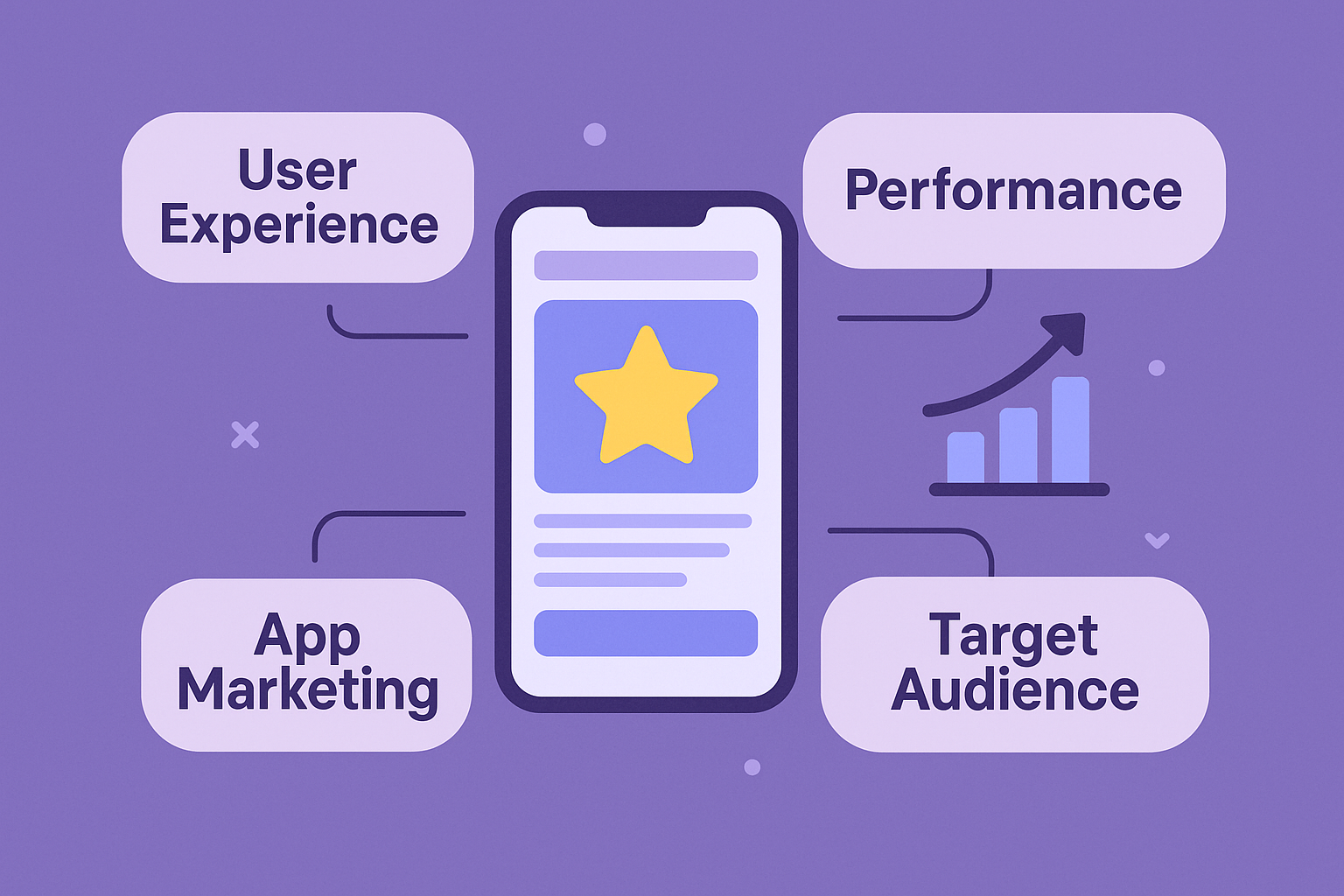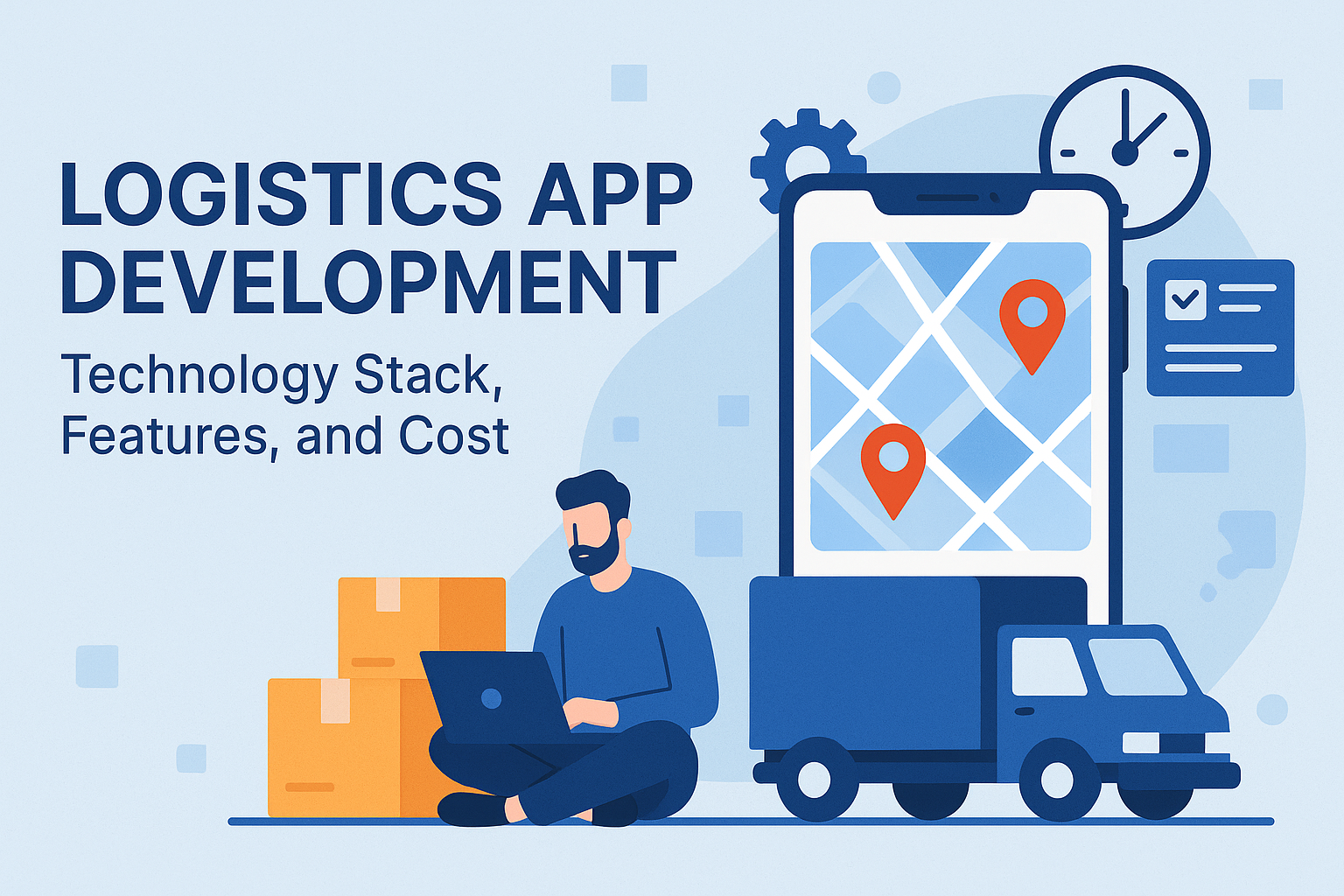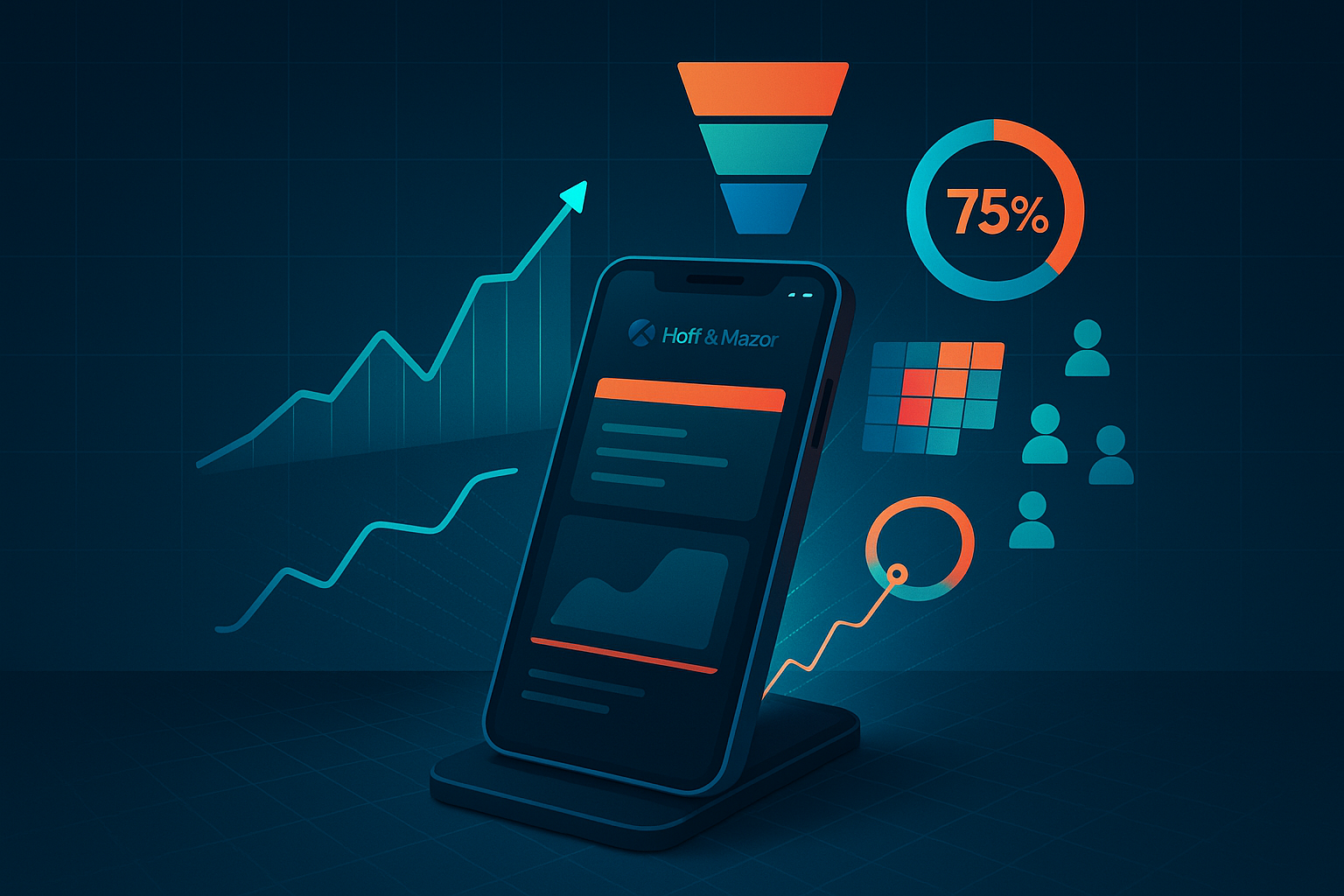- January 20, 2025

Social media platforms have become an integral part of everyday life. TikTok, a Chinese-owned app is one such platform that has amassed over a billion active users globally, with millions of them residing in the United States. However, in early 2025, TikTok faced a significant legal and political challenge in the U.S., which threatened its very existence in the country. Due to national security concerns, there was a real risk that TikTok could be banned in the U.S. — a move that would have had severe ramifications for both users and businesses.
In a surprising turn of events, former U.S. President Donald Trump intervened to prevent the ban, and with his influence, TikTok was restored to U.S. users. This moment marked a dramatic chapter in the ongoing saga of data privacy, foreign influence, and government intervention in the tech world. This blog post will delve into the political developments surrounding TikTok’s potential ban, Donald Trump’s role in its restoration, and the broader implications for the tech and social media landscape in the United States.
The U.S. Government’s Stance on TikTok
The controversy surrounding TikTok in the United States began long before 2025. While the app gained significant popularity, especially among younger audiences, it quickly raised national security concerns. These concerns were centered around the idea that TikTok, owned by ByteDance, a Chinese company, could be using the vast amount of personal data it collects from its U.S. users to influence U.S. politics, spy on individuals, or hand this data over to the Chinese government. The growing tensions between the U.S. and China only exacerbated these concerns.
By 2024, these fears culminated in the Protecting Americans from Foreign Adversary Controlled Applications Act (PAFACA), which sought to address the growing risks posed by foreign-controlled tech companies. The legislation set a strict deadline for ByteDance to divest its U.S. operations or face a nationwide ban of TikTok. ByteDance was given until January 19, 2025, to comply with the U.S. government’s demand to separate its U.S. business interests from China, or TikTok would be shut down.
This ultimatum reflected the U.S. government’s growing focus on safeguarding data privacy and limiting foreign influence over American digital infrastructure. As the deadline approached, many American users and businesses began to prepare for the possibility of losing access to the app, which would have disrupted personal and professional lives across the country.
The Imminent Ban: January 2025 Crisis
The deadline passed with no agreement between ByteDance and the U.S. government. On January 18, 2025, the U.S. government announced that TikTok would be shut down, effective immediately. This decision caused widespread panic among the app’s millions of American users, many of whom had become dependent on TikTok not only for entertainment but also for business, brand promotion, and social interaction.
For influencers, small business owners, and marketers, TikTok represented a vital platform for reaching younger demographics, and its removal from the U.S. market would have had far-reaching economic consequences. The TikTok ban also raised questions about the broader implications for digital free speech and access to global platforms, particularly in light of the U.S. government’s increasing control over the digital space.
While TikTok had already faced scrutiny from U.S. lawmakers in the past, including attempts by previous administrations to ban the app, the 2025 crisis was different. This time, the U.S. government’s actions seemed more serious and immediate, threatening to permanently disrupt the platform’s operations in the U.S.
Donald Trump’s Intervention: A Last-Minute Lifeline
Just as the deadline passed and the TikTok ban seemed inevitable, former U.S. President Donald Trump stepped in with a bold intervention. Despite not being in office at the time, Trump, a vocal critic of China and a proponent of “America First” policies, announced plans to issue an executive order on January 20, 2025, to prevent the TikTok ban from taking effect.
In a move that surprised many, Trump proposed a joint venture that would allow TikTok to continue operating in the U.S. under the oversight of a U.S.-based entity. His plan involved the U.S. government acquiring a 50% stake in a new venture that would oversee TikTok’s operations in the country. This initiative was aimed at addressing national security concerns while also ensuring that the app’s U.S. users could continue to access the platform without disruption.
Trump’s intervention was seen as a pragmatic solution that balanced national security interests with economic and political realities. By offering a compromise that would allow a U.S. entity to have a controlling interest in TikTok’s operations, Trump sought to alleviate concerns about Chinese influence over the app while preserving its popularity in the U.S.
TikTok’s Restoration: A Swift Resolution
Thanks to Trump’s intervention, TikTok services were quickly restored in the U.S. after the initial shutdown on January 18, 2025. Within hours, users who had previously been locked out regained access to the app, and business as usual resumed. TikTok’s U.S. operations were effectively saved by the proposed joint venture, and ByteDance expressed its gratitude for the U.S. government’s involvement in resolving the issue.
TikTok’s CEO issued a statement thanking President Trump for his efforts, which allowed the platform to continue operating while also complying with the U.S. government’s data privacy concerns. The proposed joint venture with the U.S. government was seen as a temporary solution, but one that allowed the platform to maintain its foothold in the U.S. market while working to address regulatory issues.
While the ban had been avoided, questions remained about the long-term future of TikTok in the U.S. Many lawmakers, especially from the Republican and Democratic parties, still voiced concerns about the app’s ties to China and its potential use for espionage or manipulation. This means that while TikTok had survived for now, the platform would continue to face regulatory pressure in the years to come.
The Debate Over Data Privacy and National Security
The controversy surrounding TikTok’s potential ban goes beyond the specific case of one app. It underscores the broader concerns about data privacy, national security, and foreign influence in the digital age. TikTok, like other foreign-owned platforms, was caught in the crosshairs of a growing global debate about the control of data and its potential to be used for political or economic leverage.
On one hand, proponents of the ban argued that TikTok’s ownership structure posed a direct threat to U.S. national security. The idea that a Chinese company could potentially access and misuse the personal data of millions of Americans was alarming to many lawmakers, particularly in the context of the ongoing trade war and geopolitical tensions between the U.S. and China.
On the other hand, opponents of the ban argued that it represented an overreach of government power and a threat to digital freedom. They contended that banning TikTok was a drastic move that would harm American businesses, influencers, and creators who rely on the platform to reach audiences. Critics also pointed out that there were already existing data privacy laws in the U.S. that could address concerns without resorting to a ban.
Ultimately, Trump’s intervention helped to avoid an all-out ban, but it did not eliminate the fundamental questions about data privacy and national security that continue to surround TikTok.
Business Impact: The Marketing World Breathes a Sigh of Relief
One of the most immediate impacts of Trump’s intervention was felt by the business and marketing world. Influencers, brands, and small businesses that had heavily invested in TikTok as a marketing platform were initially left in limbo when the ban was announced. TikTok had become a critical tool for reaching younger audiences and driving engagement through short-form videos. A permanent ban would have forced these businesses to find alternative ways to connect with their target market.
Thanks to Trump’s intervention, the threat to these businesses was temporarily lifted. TikTok’s continued operation means that marketers can continue to leverage the platform for brand awareness, product launches, and influencer marketing campaigns. However, the uncertainty surrounding TikTok’s future means that businesses must remain cautious and consider diversifying their digital marketing strategies to mitigate the risks of future disruptions.
Moreover, businesses involved in mobile app development may now take additional notes on the growing influence of government regulation on tech platforms. Mobile app developers may face more scrutiny and a need for greater transparency in data privacy practices, especially for global platforms with millions of users.
Looking Ahead: What Does the Future Hold for TikTok?
While TikTok was saved from a permanent ban in the U.S., its future remains uncertain. The platform will likely continue to face regulatory pressure, particularly as lawmakers and security agencies scrutinize its operations and data practices. The proposed joint venture with the U.S. government may provide a temporary solution, but it’s unclear whether this will satisfy all concerns or whether more stringent regulations will be introduced in the future.
Moreover, TikTok’s success in the U.S. may inspire other countries to take similar actions against foreign-owned tech platforms. The geopolitical landscape is constantly shifting, and the role of social media companies in shaping public discourse and influencing political outcomes will continue to be a contentious issue.
Conclusion
Donald Trump’s intervention played a pivotal role in preventing TikTok’s U.S. ban and allowing the platform to continue operating in the U.S. amid political turmoil. While the ban was temporarily averted, the debate surrounding TikTok’s data practices, national security concerns, and foreign ownership will likely persist for years to come. The case of TikTok serves as a powerful reminder of the growing intersection between technology, politics, and national security — and the need for careful regulation to ensure that digital platforms serve the best interests of their users and countries alike.
- November 27, 2024

Healthcare apps are taking center stage in a society where technology is king. Imagine relaxing on your couch while keeping track of your health, scheduling appointments, or communicating with your doctor on the phone. Doesn’t it sound like an unreal scenario? These applications, however, are changing the game for both patients and medical professionals.
The digital world is booming due to the rise in the creation of iOS app development and Android app development as well as game app development. And now, it’s taking on the healthcare industry head-on, revolutionizing the way that convenience and innovation are combined.
But why all the excitement? Let us analyze how these intelligent technologies are changing healthcare, tackling significant issues, and reshaping the industry.
Key Benefits of Healthcare Apps
Healthcare Apps are similar to carrying a miniature clinic. Here’s why they’re so important.
Convenience on the Go: Everything is just a tap away, including scheduling appointments and retrieving medical records.
24/7 Access to Care: At any time, patients can access self-care resources or communicate with doctors.
Better Patient Engagement: Apps notify patients by reminding them to take their medications, schedule checkups, or do blood tests.
Cost-effective Solutions: Patients and providers both benefit financially from fewer needless visits.
Better Diagnosis and Monitoring: Wearables that track data in real-time link with applications to provide doctors with immediate information.
Types of Healthcare Apps
Apps for healthcare are diverse and can be tailored to meet a variety of needs. Among the most popular are
- Telemedicine applications that allow patients to consult with doctors virtually.
- Step counters, meditation tools, and diet regimens are examples of fitness and wellness apps.
- Medication reminder apps. Remember to always take your medications on time.
- Apps that help people manage long-term conditions like diabetes or heart disease.
- Apps for hospital management help hospitals with patient flow, scheduling, and documentation.
Core Features of Healthcare Apps
Some qualities are essential for success in the cutthroat healthcare retail app development industry. Personalized dashboards and user profiles provide experiences that are customized for both doctors and patients. Sensitive health records must be stored securely to prevent breaches. While wearable integration provides smooth syncing with gadgets like smartwatches and fitness trackers, appointment scheduling streamlines the booking procedure for all parties. Last but not least, telemedicine features like live chats, video conferencing, and instant messaging help treatment and make healthcare more accessible than before.
Critical Factors for Successful Healthcare App Development
Not every app is successful. For a successful healthcare app development, research about
User-Centric Design: Apps have to be straightforward, streamlined, and intuitive to use.
Regulation Compliance: To protect user data, abide by HIPAA, GDPR, and other regulations.
Cross-Platform Functionality: Applications have to function just as effectively on the iOS and Android operating systems.
Updates that go smoothly: Frequent updates keep the program current and free of bugs.
The Role of AI and Machine Learning in Healthcare Apps
Healthcare apps are being revolutionized by machine learning (ML) and artificial intelligence (AI). Tools driven by AI can
- Analyze user data to make early illness predictions.
- Customize care in line with health trends.
- Improve chatbots to provide immediate medical guidance.
Fun fact: AI is currently included in around 30% of healthcare apps, and the percentage is growing!
Integration with Healthcare Systems and IoT
The Internet of Things (IoT) improves the intelligence of healthcare apps. Consider wearable technology, smart thermometers, or glucose monitors. The Internet of Things connects these devices to applications for better results and real-time monitoring.
Smooth communication between patients, applications, and healthcare practitioners is made possible via integration with electronic health records (EHRs).
Challenges in Healthcare App Development
But hold on, things aren’t always easy. The following are some difficulties faced by developers
Data Privacy Issues: It could prove challenging to protect sensitive data.
Regulatory Challenges: Complying with compliance regulations can be quite difficult.
User Adoption: Convincing senior citizens to utilize applications is a difficult task.
Problems with interoperability: Making sure applications function properly with current platforms.
Best Practices for Designing Healthcare Apps
Follow these golden guidelines while creating remarkable health apps
- Keep It Easy to avoid giving users too many features.
- Put Security First to protect data, use encryption.
- Extensive testing guarantees a faultless user experience.
- Involve Users to gather feedback so that the program can be improved over time.
Step-by-Step Guide to Developing a Healthcare App
Research and Planning: To begin, identify who your target audience is and what their problems are. Analyze rivals and determine what features your app will provide to meet these difficulties.
Wireframing and Design: Lay out the app’s structure and functionality using a simple layout. Make an effort to create a simple, user-friendly design that appeals to all ages.
Development: Depending on your platform (iOS, Android, or both), select the appropriate technology stack. Incorporate essential elements such as wearable integration, telemedicine capabilities, and secure data storage.
Testing: To get rid of glitches, secure lag-free operation, and confirm device compatibility, do extensive testing. Put data privacy and security first in order to satisfy healthcare regulations.
Launch: Put your app on app stores and make sure it has a solid marketing plan. Use app store optimization (ASO), targeted promotions, and user feedback for a successful launch and future upgrades.
Future Trends in Healthcare App Development
Healthcare applications have a bright future ahead of them since the sector is being shaped by creative ideas. Apps that are customized to each patient’s health profile for more precise treatment are at the forefront of personalized medicine. Virtual surgery training and interactive patient education are made possible by Augmented Reality (AR), which is transforming the sector. Sensitive health data is being unhackably protected by blockchain technology, which is raising the bar for security. Pharmacies are using digital prescriptions and providing smooth services through applications, which is changing even retail integration. All of these developments are changing how healthcare is provided and received.
The Transformative Impact of Healthcare Apps
The creation of healthcare apps aims to save lives, increase access to treatment, and advance the intelligence of the healthcare sector. It is not simply about technology. The possibilities are unlimited when AI, iOS app development, and Android app development are combined. Is it time to embrace this revolution? The healthcare of the future is here, and it’s economical.
- November 26, 2024

Mobile Apps already control all elements of our lives, including how we interact, shop, work, and even relax. The mobile app sector is booming, with revenues projected to reach $935 billion by 2025. This makes it very evident that you’re losing out on a lot if you’re absent from the app world. The most annoying aspect is that writing complicated code is one of many things needed to create a good application. Getting everything just right is the aim without any app development errors. You can save time, money, and frustrations by avoiding typical pitfalls in app creation.
Let’s go over the five most frequent mobile app mistakes developers make and how to prevent them if you’re brainstorming your next big app idea. Indeed, these observations also apply to book distribution, book publishing, and book printing because the fundamentals of error prevention are the same no matter the product.
Neglecting Market Research
Let’s say you launch an app that nobody uses. Doesn’t that seem like a nightmare? When mobile app developers neglect competitor research, this is what occurs. Just like creating a book without knowing who your readers are, developing an app without knowing the target audience analysis would inevitably fall short.
Why It Matters
You can better comprehend your user demand study with the use of market research. Without it, you run the danger of creating something that is out of date or overshadowed by superior rivals.
Key Tips for Success
- Identify your target audience and evaluate their needs. If you distribute books, for instance, consider what characteristics customers would find most appealing about your app.
- Examine trends and competitors with tools like App Annie and Google Trends.
- Examine what is and is not effective for rivals.
Consider market research as the foundation for your app. Knowing your audience is important if you’re creating an app or working on publishing services.
Poor User Experience (UX) Design
Here’s the brutal reality: If your app is not known or clumsy, users will uninstall it more quickly than you can say “download” Even the most creative mobile app design principles can be killed by a poor user experience (UX). Here is what makes a great UX
- Simplicity: Make sure the layout is simple and the navigation is easy to use. Users are too busy to navigate a maze of tunnels.
- Responsiveness: Your app must function and should have an intuitive UI across all platforms, including tablets and smartphones.
- App Usability: You can generate mockups and test layouts before launch with the aid of programs like Adobe XD and Figma.
88% of users say they won’t use an app again after a negative encounter. Right there, that is a deal-breaker. Don’t make typical UX errors like small buttons, crowded interfaces, or menus that are too complicated. Make it simple. Make it smooth.
Ignoring Platform-Specific Requirements
When it comes to app development, there is no one-size-fits-all solution. iOS app development vs. Android app development are like apples and oranges, both fruits, but quite different.
Why this matters
- Distinct rules: iOS and Android have different specifications for functioning, features, and design.
- User expectations: Compared to iOS users, Android consumers anticipate a different experience. Failing to do so can drive half of your audience out.
- Tech differences: Platform-specific optimization is essential for seamless performance across hardware and operating systems.
Is it better to go cross-platform development, hybrid, or native? Your goals and money will decide that. Native apps are more expensive yet provide the best performance. Although hybrid applications are less expensive, they could lack the same finished appearance.
Pro Tip: The best advice is to test your app manually on every platform to prevent compatibility issues.
Skipping Thorough Testing
After developing, do you think your app is ready? Rethink your thoughts. The unsung hero of developing mobile apps is testing. You’re setting off a ticking time bomb of errors, crashes, and negative reviews if you don’t have it. Here’s how to ace app performance evaluation done
Functional testing makes sure that all of your app’s features operate according to plan, while performance testing examines how well it can manage high traffic or massive data loads. The goal of bug testing tools is to secure user data by making sure it is encrypted and shielded from potential dangers. Usability testing, on the other hand, looks at how responsive, easy to use, and intuitive the app is.
Appium, Selenium, or Firebase Test Lab are examples of automated mobile app QA tools. Beta testing is the best option. You’ll find errors you might have overlooked with the helping hands of real users.
Fact check: Resolving defects after they’ve been released can be up to five times more expensive than doing so during development. Testing early is not optional. It is required.
Overlooking Post-Launch App Maintenance
Just launching your app is the first step. You’re going to be rudely awakened if you believe the work is done. The application you’re using runs the danger of becoming obsolete or, worse, without routine maintenance.
Your app thrives when it is properly maintained. Regular updates address issues, improve speed, and add new features, making your app progress and not be abandoned. Analytics applications that track user behaviors, such as Firebase or Google Analytics, provide insightful data. Meaningful upgrades are guided by user feedback, and A/B testing identifies the most popular features or designs. Apps that receive regular updates possess retention rates that are 80% higher than those that do not. Make constant improvements, post-launch updates, and your users will remain loyal.
Wrapping It Up: Build Smarter, Not Harder
Avoiding these five frequent blunders will save you a lot of problems when creating a successful app development. Invest in the mobile app best practices like great UX design to keep consumers interested after conducting in-depth market research to understand who your audience is. Platform-specific standards should be met to provide an error-free interface, and testing should never be neglected because bugs can destroy even the greatest apps. Maintaining your app after launch is just as important to its survival. Your app can stick out in the very competitive mobile app market with careful planning, well-considered design, and ongoing development. Ready to make your app creation strategies a successful one? Start Now.
- November 22, 2024
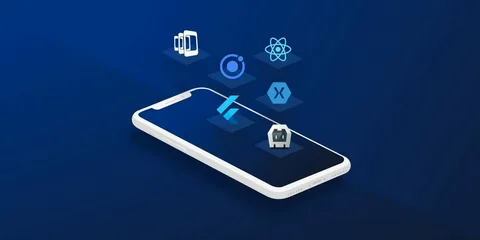
If you are a novice app developer and have recently joined the app development industry, you might have limited knowledge about app development and the architectural patterns employed in app development. Learning about mobile app architecture has become significant for app developers nowadays. Robust and agile application frameworks, components, and different layers facilitate app developers in structuring, designing, and testing the application. Knowing about the architectural patterns, models, designs and other components improves the organization and configuration of the application and helps build a robust mobile application ecosystem.
Understanding the app architecture relates to knowing the functional components of the app. The navigation of app structures allows system programmers to know the operational functions of different components. UI, database, APIs, UI/UX design interface, and other interactive elements execute effective coding and data processing. Define and implement operation management and improve app computability. A sturdy structure ensures the scalability, and efficiency of mobile applications, thus, offering intuitive, and seamless app functioning.
Overview of Mobile App Architecture

Mobile app technology has driven the global Mobile App Development market. With around 7 billion smartphone users, the mobile technology is expected to reach 7.7 billion by 2028. The mushroom growth of smartphones and technological advancements has led to the expansion of numerous mobile applications in the market. Consequently, mobile application programmers employ technology trends in designing and creating exclusive mobile applications that are compatible with mobile devices. It signifies developers focus on improving the app architecture by employing innovative features and functionalities that maximize the app’s performance.
If you are planning to develop an app, you must know mobile app architecture – its layers, and components!
An app architecture refers to the structural design and organization of a mobile application. It involves various components such as user interface (UI) design, backend services, APIs, data management, and other processors that manage code and resource sharing. The app architecture comprises a collection of UI/UX, data flow, tech stack, and frameworks that lead to a quick and smooth app development process. The architecture diagram displays a visual representation of the app’s structure. It demonstrates the presentation layer, business, and data layers, and other components that seamlessly work and perform various functions. Each layer executes specific purposes such as app designing, development and testing, data processing, and optimizing the internal and external operating system performance.
The presentation layer
The presentation layer forms a key part of Mobile app development architecture. The layer demonstrates a visual representation of the app. The presentation layer consists of a user interface, screens, navigational buttons, and visual elements that boost users’ interaction with the app. The presentation layer formed from the UI/UX framework focuses on creating visually appealing apps for the end users. The UI design elements encompassing buttons, themes, color, fonts, images, animation, and graphical elements help develop the striking architecture of the app. An aesthetically pleasing and intuitive interface engages users and provides a smooth app navigational experience.
Data layer
The data access layer integrates data access components, data utilities, and service agents. The data access components act as a link between server infrastructure and other core services and ensure smooth data storing, processing, and transmission of data across various digital platforms. Synchronization with other layers increases system speed and efficiency. Moreover, the data layer working with other internal and external operating systems optimizes database query performance. The data layer helps make a database query faster and ensures safe and secure data storage. It effectively manages queries, caching, and other data access mechanics.
Business Logic Layer
The business logic layer is an essential component of mobile app architecture that deals with database management systems. Executing the business logic of an application, the business layer placed between the presentation layer and the data access layer manages data processing and manipulating data. The layer combines and translates all data formats into suitable and compatible formats before it is accessible to the user or stored in the database. The business logic layer defines how operating systems and devices encode, and compress data to ensure secure and encrypted transfer of data across different networks. Following business logic practices, the app developers write complex business codes and processes to create and modify data.
From data processing to transmitting, adding UI elements to the interface, and writing clear and legible codes mobile application architecture ensures a clear and seamless transition between layers. The layers perform key functionalities of building strong responsive apps with unique architecture design, quick load time, and high app speed.
Why is Mobile App Architecture Crucial for App Development?
Maximize the Performance of the mobile app
The architecture of mobile application development plays a crucial role in enhancing app performance and speed. By implementing specific architectural patterns, developers improve responsiveness and streamline development processes. The fundamental components of app architecture comprising the presentation layer, business logic, and data layer accelerate app development process. The designers create striking user-friendly interfaces, reuse code, reduce app development and testing errors, and help create smooth-functioning apps.
A well-designed mobile architecture builds a compatible app
The compatibility feature allows apps to run on numerous platforms without interruptions. Architectural patterns significantly help create compatible apps that seamlessly run on different devices and operating systems. Several architecture layers such as the Model View Model (MVVM) architecture, Middleware architecture, and Model-View-Controller (MVC) make the app compatible with diverse systems. Compatibility through unified architecture model processes and transfer of data smoothly through the user interface and other systems. A compatible interface with appropriate navigational elements such as buttons, suitable font size, and proportionate screen size and resolution of the device allows users to have smooth navigation across multiple devices and browsers. Compatibility testing framework increases app accessibility and yields a superior user experience.
Scalability
The scalability of the app demonstrates the app’s ability to handle an increasing workload of an extensive audience. Scalability increases the app’s long-term viability and extends the user base. High app scaling allows businesses to improve the app’s infrastructure to support a large number of user requests without a minimum delay. A high-performing scalable app handles a bigger load through network congruence, enabling data to securely reach different devices and networks. Hence, app scalability seamlessly manages several requests by optimizing the database and implementing a load-balancing mechanism.
Choosing the Right Architecture Pattern for Mobile Application
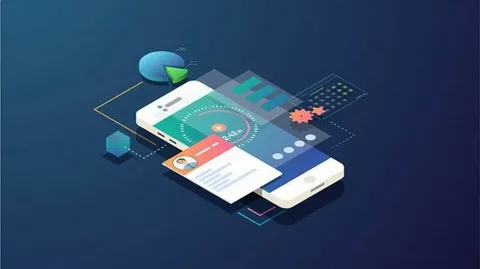
Popular Architecture Patterns
- MVC (Model-View-Controller)
MVC is used to design simple applications. The framework includes three components. The model deals with the app’s business logic and manages data processing functions. The second part, View handles UI elements by creating a striking user interface. The architecture pattern boosts user interaction, allowing users to conveniently navigate the app. The last component, the Controller intercedes between view and model to process incoming user’s requests. Thus, the three components facilitate app developers with a quick development process and ensure that app tests maintain high-quality standards.
- Model View Presenter (MVP)
The architecture pattern includes a component, a presenter that regulates all functions. Similar to MVC, this model also manages the data management process. The key purpose of MVP is to ensure secure data processing, and transferring to different networks and devices. Moreover, the presenter updates the data input received from users through view.
- Model-View-View Model (MVVM)
The process of MVVM and MVC are similar as both models manage data processing and control systems. The View-Model efficiently separates an application’s business and presentation logic from its user interface. This process leads to smooth app development and testing. Moreover, MVVM also assists UI designers in debugging and code reusability process.
Mobile app designers who desire to choose an efficient architectural pattern for building unique apps should know the benefits of different architectural patterns. If you plan to create a simple and easy application for the users, you can employ, the Model-View-Controller framework. Model View View Model and, Model-View-Presenter facilitate formulating apps with more complex functions including intricate data processing and manipulation. The frameworks optimize resource practice, increase communication between different layers, improve cloud capabilities, and simplify UI code. Thus, they split the visualizing, processing, and data management functions and collaborated to make the app development and testing process more robust.
Getting Started with Mobile App Development- Key Considerations
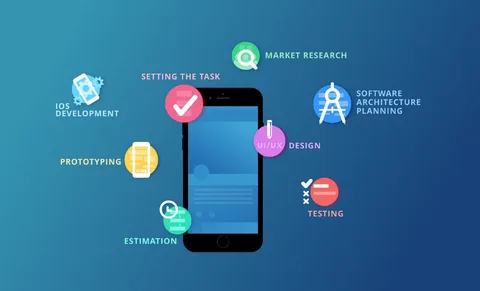
Role of Android App Development in Building Android Apps from scratch
The Android app development has become a thriving industry globally. Having exclusive features such as, a robust data management process, automation system, security, accessibility, and multitasking, the Android operating system is widely used by app development companies. Android Studio is the main component of Android app development that integrates with other testing tools and resources. A robust and quick development environment (IDE) assists app developers in the creation and designing of native Android apps. During the development process, an Android app developer should focus on building MVP features. It helps them know the essential features to be incorporated within the app. The designing phase includes using UI/UX designs to create visually pleasing and intuitive user interfaces that enhance the app’s usability.
The Android app development kit ensures high-quality app testing, debugging, and deployment of the Android apps. The development tools identify bugs and other defects during application development and efficiently fix the errors to let the application function appropriately. Since Android apps are built with object-oriented languages such as Java, Kotlin React Native, and Dart, they develop numerous applications using a single base code. These Android apps seamlessly operate on different networks and devices. With a high-feature operating system platform, Androids creates high-performing applications that are compatible with various operating systems.
iOS App Development Process
An experienced iOS developer employs Swift programming language, and Objective-C to write codes to create iOS apps. They require Xcode, an integrated development environment (IDE), and an Apple Developer account that is installed on the App Store. The iOS app creation process involves using wide-ranging iOS tools and resources such as native APIs and library kits. The iOS SDK platform tools smoothly integrate the iOS app into Apple’s structure and workflow. Moreover, mobile SDK improves the cloud-based capacity of the app, ensuring secure data storage, fast database management, and app caching.
iOS app development involves two programming languages Objective-C and Swift to create a simple and legible syntax for app creation. Both these programming scripts share runtime in programming allowing developers to integrate legacy codebase into iOS apps. Employing UI/UX design helps in creating an outstanding user interface along with other components, screen colors, themes, and animation that boost user’s interaction with iOS apps. iOS developers use IDE testing components for app testing and debugging process. IDE consists of automated UI testing tools, a Code Editor, a Debugger, an Interface Builder, and a testing engine that leads to smooth coding and protects the app from bugs.
Cross-Platform App Development
If you desire to create numerous applications using one-time code that seamlessly operates on different devices and networks. In such a case, employing cross-platform mobile app development is the most suitable choice framework that assists you in establishing robust and high-speed cross-platform apps.
Cross-platform app developers use numerous programming scripts such as Dart, C#, JavaScript HTML, JavaScript, and CSS to write a single code. The code reusability feature helps developers create several apps using a particular code. Utilizing a simple and one-time code allows the apps to operate on multiple platforms efficiently. The cross-platform apps having a single codebase reach to app market more swiftly and are easily accessible by users.
Using specialized cross-platform frameworks such as React Native, Flutter, and Xamarin assists app designers in planning and designing a unique prototype with advanced features. Thus, creating practical, and functional cross-platform applications leads to rapid app development, decreases development costs, and expedites the app release process.
Programming Languages Facilitates in Application Coding
Selecting an appropriate programming language for app creation implies system programmers and coders know various programming scripts used for writing programming codes. It includes using Swift, Objective-C, Native C/C++, and JavaScript for creating iOS and Android applications. Other programming languages such as Dart, Perl, and Python are widely used by app developers to write simple and comprehensible codes to create visually pleasuring user interfaces and other components. Dynamic and agile languages have code readability features that have eased the app creation process. The programmers write one-time code that helps create several applications that seamlessly run on multiple platforms. Platform-independent languages comprising Java, Python, C#, and JavaScript include extensive libraries and frameworks that bring flexibility in writing scripts and modifying the codes. The coding experts write the simplest commands and statements that can be altered and reused to create new applications. Hence, applying agile programming language features including easy-to-understand syntax, and other significant features develops high-quality, robust applications for prospective clients.
Design (UX) and (UI) User Interface
UI design demonstrates the process of creating an elegant and captivating interface and layout of the application. UX and UI designers develop wireframes and prototypes comprising exceptional UI design, colors and themes to be incorporated into the user interface. Visual Design also includes designing navigational buttons and other clickable components. The designers analyze the color patterns of the screens, and layout and ensure color compatibility that engages users. Moreover, using appropriate fonts and adding animation, topography, and other visual components increases the app’s usability and function. Thus, visual components bring a meaningful and user-friendly navigation experience for users.
Testing and Debugging
App testing relates to the process of evaluating an app’s performance before it gets released in the market. Mobile app testing involves constant testing of app components during the development phase. A systematic and controlled testing procedure evaluates app functionality, performance, and speed.
Core testing features comprising unit tests and integration tests engage in comprehensive testing. Beginning with a broad testing plan, a test specialist examines the testing approaches, resources, and tools used for testing. The production process implicates the accuracy of testing data. From testing the app design, code review, and functional testing, the engineers collaborate with product design teams to create controlled testing environments. The testing experts perform various tests such as performance testing that assess how the app performs on different operation systems. The integration testing process allows the testing team to check architectural defects, ineffective app designs, and coding errors. Security testing allows testing professionals to check security vulnerabilities. Identify bugs, viruses, and other malicious activities that cause damage to the app’s stability and functionality. Thus, high-quality mobile application testing procedures ensure robustness and better testing outcomes.
Deployment and Distribution
Once the application gets ready to be launched in the market, the app marketers facilitate developers and publishers in upsurging the app’s marketing and promotion. Business application developers create an app launch marketing plan that increases the application visibility among potential clients. The initial launch strategy involves two possibilities for mobile app deployment. The app can be installed through an app store or using a URL or a direct download link. The users also conveniently download or install numerous apps through browsing websites.
The next part of the app launch strategy analyzes the existing mobile app marketing approaches and employs innovative app marketing trends that attract users. The marketers initiate promotional events that boost app branding. It includes incentivizing customers, offering them pre-order discounts, and distributing coupons and vouchers. Online branding involves businesses to launch marketing campaigns on social media, email, and online sites. Using podcasts, blogs, and striking visuals boosts user engagement with the app.
Learning Resources
App developers have numerous options to enrich their app development skills and learning. It includes having access to online resources such as attending educational programs and online courses that offer knowledge on how to build high-performing applications. Moreover, the users keep abreast with technological advancements in the app development market.
The other learning resources comprise joining online platforms, mobile app development services, and virtual learning environments. These digital services organize seminars, workshops, and online lectures that provide practical tasks, and also offer hands-on experience to new app developers to build unique mobile apps. Hence, innovative marketing approaches influence a broad audience toward the app.
Recapitulate
If you are a new mobile app developer and intend to create robust apps that are compatible with different devices and networks. In such a case, you are required to gain significant knowledge of app development procedures. An essential component of app development is mobile app architecture. It refers to app structure, designing, writing programming codes, and analyzing other app components. Different layers of mobile app architecture such as the presentation layer, business logic, and data layer interact with each other to handle data processing and management. The other function of architecture patterns includes improving the coding of mobile apps and creating striking user interfaces that provide a smooth navigation experience to users. Architecture models ensure app compatibility. It implies programmers gain knowledge of Android, iOS, and cross-platform frameworks and identify the right framework that helps create highly compatible apps that operate smoothly on multiple networks. Another key element of mobile app architecture is to create interactive user interfaces and other visual components. The app testing ensures that architecture patterns improve the performance of app components and enhance the scalability of the app. The evolving changes in app development have influenced software development firms to incorporate modern mobile architecture designs to develop distinctive apps. Moreover, robust mobile app architecture boosts the market reach and usability of the app. More app downloads, installs, and other promotional events increase the market visibility of the app.
- June 20, 2024

Your exceptional and high-performing app makes a difference in the consumer market. How do you choose an appropriate app category that is lucrative and beneficial for your mobile app business? Whether you are an experienced entrepreneur, or new to the app development industry, selecting the right app category appears to be a daunting task. The decision-making process involves considering factors such as the nature of the application, and the level of customization required. App developers are required to navigate the changing app categories in app stores. Potential users come to know a variety of apps that are specifically created and designed to meet users’ needs, preferences, and changing trends. Google Play Store apps describe application types along with their features and functionalities. These classifications primarily comprise consumer applications and enterprise apps. The users have the flexibility of operating these applications on both iOS and Android platforms. Depending on their distinctive roles, both consumer and business apps perform different functions. The evolution of enterprise and consumer app categories has transformed the digital marketplace. Developers have created more user-friendly, responsive, and high-efficiency apps that provide a smooth and engaging user experience.
User-Centric Consumer Apps for The Digital Age
Today, the digital ecosystem is dominated by a variety of consumer apps that facilitate users in executing various tasks. The apps have impacted consumer health and well-being. Healthcare apps and fitness apps have improved physical activity and health outcomes of the users. The mobile app development market is playing a pivotal role in streamlining consumer services. For instance, the users have the convenience of online payment, buying, and shopping experience. Consequently, consumer apps enhance personalized engagement, enabling users to build positive experiences with the app.
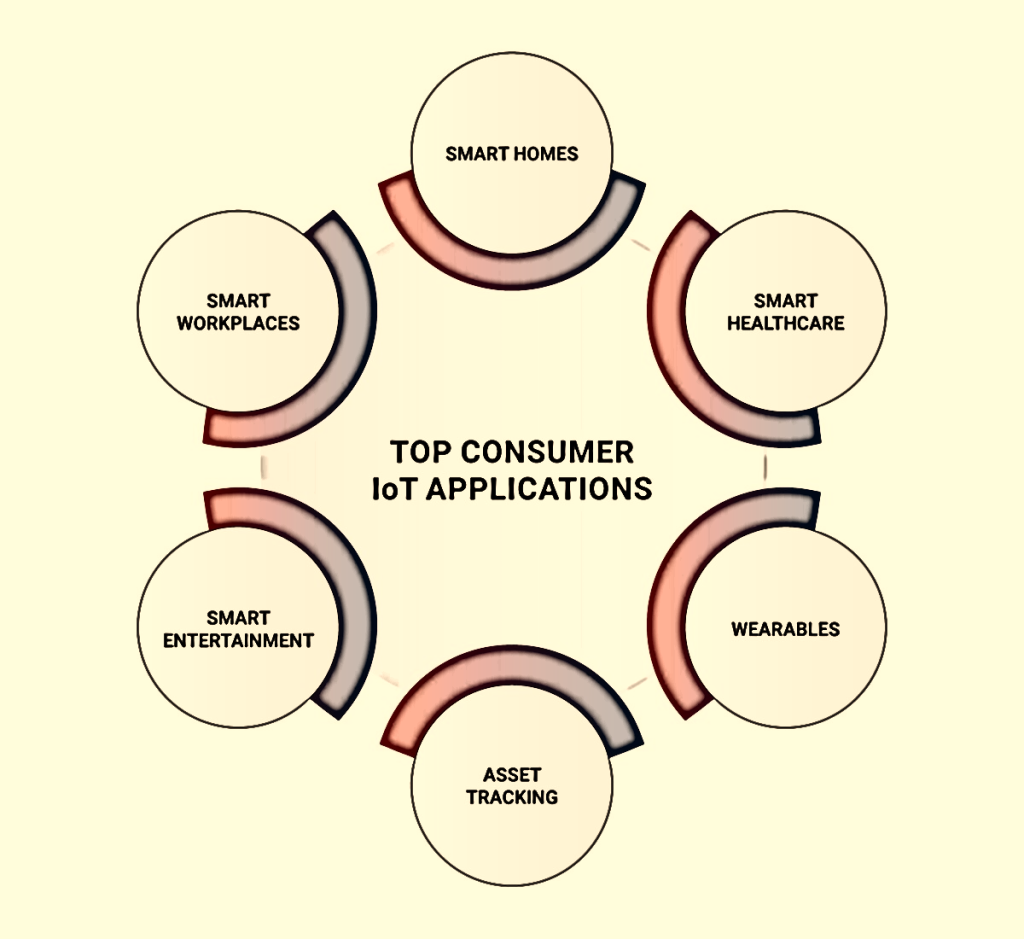
Importance of Social media apps for consumers
Social media platforms comprising Facebook, Instagram, Twitter, and LinkedIn have helped targeted audiences gain brand awareness. The recent statistics provided by Sprout Social states that 55% of consumers gain information about new companies and their brands through social media. Having easy access to social media sites enables consumers to explore various products, and services in an extensive marketplace. They deliver real-time reviews and instant feedback regarding their experience with the app. Social media campaigns for consumers involve posting striking social media posts and quality content on various sites. Premium quality content influences the targeted audiences and keeps them informed about new launching brands in the market.
Gaming Apps fascinate online gamers
The mobile gaming industry is growing rapidly, with game app development driving significant advances. Alliance Study has indicated that mobile gamers have hit $111 billion. 46% percent of mobile gamers play 3+ hours per week. A variety of games comprising 2D and 3D animation and AR/VR games enable gamers to enjoy a mesmerizing gaming experience while listening to music. Moreover, Blockchain-based games, problem-solving, and action-based games have developed mind-blowing effects on the users. Since the entertainment games are more convenient and accessible for the users, it improves the user experience with the games.
E-commerce and Shopping Apps
E-commerce apps facilitate online shopping. Customers flexibly browse the product sites to choose a product that they intend to purchase. Having access to a digital catalog, consumers acquire important brand information. Moreover, online buyers have varying choices of using online stores and shopping carts that offer a unique shopping experience. As e-commerce apps offer consistent value of e-commerce brands across different touchpoints, it influences customers to positively interact with the brand. Consequently, it increases purchasing frequency and enhances a seamless e-commerce consumer experience.
Smart health care and Lifestyle Apps
Lifestyle apps cover a wider range of sections such as dating, food, music, travel, parenting, hobbies, habits, and travel. Consumers browse different categories and get significant tips related to health and fitness. Moreover, the apps regularly monitor general health conditions, diagnose chronic diseases, and offer the right nutritional diet and treatment to improve overall health and fitness.
Productivity Apps
These apps are used in organizations to manage numerous tasks. Teams employ various productivity apps such as Docs, Sheets, Evernote, Trello, Zoom, Todoist, Pocket, and Freedom to execute data and business management tasks. It includes creating graphs, databases, presentations, audio or video clips, and worksheets. Consequently, a simple business productivity app gives managers complete automation to complete their ongoing project tasks within the given time frame. Multi-platform apps facilitate teams of different departments to collaborate and accomplish tasks efficiently.
Harness the power of Enterprise Mobile Applications that Transform Business Models

As numerous mobile apps are launched in the app development industry, business leaders plan to create robust and scalable enterprise mobile applications. According to research conducted by Enterprise Application Market Statistics 2024, the global enterprise application market will probably generate $527.40 billion in revenue by 2030. The enterprise apps market has witnessed significant transformations in recent years. Employing digital technologies, AI machine learning, and artificial intelligence tools in business apps optimizes business processes, boosts teams’ productivity, and streamlines management tasks and workflow. Specialized enterprise applications comprising financial programs, marketing, and other business apps allow companies to efficiently manage logistics management, data processing, and monitoring. Moreover, teams have easy access to business data that is stored in the application database. These apps also facilitate companies in order management, inventory management, automating manual tasks, and improving customer service.
Types of Enterprise Mobile Applications Benefiting Organizations comprise
Employee-level applications
Employees require a practical enterprise mobile application that assists them in executing business tasks. The app improves communication between teams of different departments. Using project management apps, the teams collaborate regarding the project goals, improve workflow, and boost their skills. Moreover, the app makes the task management process smoother. Co-workers are no longer required to manually search essential documents and files. Instead, the application has a secure database that stores files in the cloud database. The managers can just click on an icon and get the required document. The app also keeps teams updated as it sends alerts and updates regarding meeting deadlines of the specific project management task.
Management-level applications
To meet project management goals and assist teams in resource planning, mobile app development agencies have developed specialized enterprise mobile applications. The resource planning apps accelerate workflow and help in collecting and storing enterprise data through internal and external resources. The app also keeps marketing teams updated about new marketing trends, and the performance of the app in the marketplace or gives details on how customers interact with the new application. Furthermore, the apps facilitate the promotional team to integrate unique marketing features, and incentives in the marketing campaigns, flyers, newsletters, and ads that promote the company’s brands and services globally.
Department-level applications
Companies use real-world business applications to track the performance and productivity of each department. For instance, an application used for the finance department allows the finance team to monitor management costs and expenses. Department-level apps comprising accounting applications, schedule management applications, and forecasting applications track inventory, billing, and financial account details and slow down expenses. A reliable business budget involves expense tracking, creating invoices, scanning receipts, and gathering other financial cost details to help create a cost-effective business budget. From monitoring KPIs of individual staff and analyzing department-level performance, sheet tracking, and tax form preparation, a functional business app also manages payroll, compensation insurance, health insurance, and other benefits of employees. The app also ensures smooth payment processing for small businesses and startups.
Team Collaboration Apps
The best team communication apps are used by companies to perform in-house project meetings within departments or with external clients and stakeholders. Various meetings are conducted with the staff working in different branches as well. Business and marketing consultants who frequently travel for business purposes communicate with clients through video conferencing, video calls, and chats. These free messaging and video calling apps facilitate meetings, allowing personnel to share live corporate documents and business letters, meeting agendas, minute meetings, and visuals.
App performance monitoring
The enterprise app running on Android App Development and iOS App Development ensures that the company data is secured in the database. To prevent data breaches, the app enterprise mobile application development companies install mobile device management (MDM) systems. This advanced security feature monitors the suspicious activities detected on the mobile website or smartphone device. MDM systems protect the device from unidentified third parties to get access to complex corporate data. Furthermore, emails and push notifications also send alerts to the company to keep aware of any malicious activity taking place on the website or user account. The security features upgrade and maintain the latest version of the app to improve app performance and speed.
Key Differences between Consumer and Enterprise Mobile Apps

- Applied business and enterprise apps are used by organizations to manage, automate, and streamline business processes. The app assists different departmental teams in account management, human resources, increasing sales, marketing, and promotion of the brand. Moreover, buyers navigate the app to find information related to reliable brands in the market. The app also sends timely alerts about sales and offers incentives that attract consumers to the brand.
In comparison, consumer apps meet different consumer requirements. Whether online buyers use the app to grab updated information about products or use an online store or booking portal to make product surveys and make online purchases. Thus, from product launches to increasing sales, the app helps boost the online viability of the company and its products.
- Primarily, built-in enterprise applications streamline business operations and increase work efficiency. In contrast, consumer apps consist of a variety of apps that benefit users. It could be gaming apps, social communication apps, photo and editing apps, and entertainment apps. The key focus of consumer applications is to provide maximum utility to the general public.
- Another important difference is that real-world enterprise apps have robust security measures such as encryption, data authentication, and strict access controls that prevent unidentified sources from getting access to corporate data. Consumer apps focus on user privacy such as keeping strong user passwords or blocking the sites to protect consumer data.
- To promote the brand, industry-specific business and commercial apps launch a subscription-based model. The apps allow businesses to pay the amount to get premium features and services. The in-app advertising model runs third-party video ads during program sessions. The company receives payment depending on the cost model used. A consistent revenue stream is also received through sponsorship apps that provide sponsorship opportunities to companies. Connecting with a wider client base and stakeholders increases brand exposure. Consumer apps utilize various monetization strategies, such as advertisements, in-app purchases, and freemium models to promote the brand among a vast audience.
- The leading goal of an enterprise application is to assist businesses in achieving their commercial and marketing milestones. It includes streamlining processes, workflow optimization, data management, and monitoring. Intuitive and consumer-friendly consumer applications have facilitated users in various tasks including convenient online shopping, and flexible payment solutions.
Benefits of consumerization in enterprise mobile apps
Mobile enterprise applications have significantly transformed consumer behaviors. Revolutionizing the retail industry, retail app development agencies have developed apps that allow consumers to browse and make online purchases from the comfort of their homes. Using online marketplaces and mobile websites further facilitates customers to compare prices, read reviews, and purchase a vast range of products from any part of the world. The application has created personalized and targeted marketing strategies that facilitate flexible and seamless mobile payments. Hence, mobile enterprise apps foster a new era of consumer empowerment and have transformed the consumer retail landscape.

Additionally, the evolution of the mobile app market has prompted mobile app services to adopt technological advancements like 3G, machine learning, and AI-powered tools to develop a dynamic mobile app industry. Consumerization of technologies suggests app developers integrate cutting-edge technologies into enterprise apps. The leading-edge business applications have impacted market dynamics and revolutionized organizational structures. Apps such as Zoom, Slack, and Notion streamline communication between employees, entire departments, and company branches. The apps assist corporations to solve complex business challenges, automate workflow, and enhance management and operational processes. Moreover, innovative enterprise mobile apps ensure that the app meets the business’s requirements as it boosts collaboration between developers, designers, and stakeholders.
Consumerization in commercial business applications implies businesses integrating payment gateway systems, and digital wallets that securely store users’ payment information. Moreover, incorporating management enterprise apps, and inventory management applications such as Dropbox, Office 365 and GSuite have streamlined workflow. Accompany, LinkedIn, and Uber comprising consumerized enterprise tech assist businesses in adopting unique marketing techniques and sales that help boost business efficiency.
Furthermore, the consumerization of functional business applications implies application analysts integrate customized app features that help create user-centric apps. A user-friendly app with optimized and refined app functionalities boosts higher engagement and also meets the unique needs of businesses. Creating an intuitive and friendly interface and layout and generating an attractive navigation bar makes app surfing smooth for the users. Stunning UX and UI designs, color patterns, and graphics attract wider users to the app.
Elevating an Android app’s performance, speed, and reliability implies developers add key metrics that lead to Mobile App Performance Optimization. Analyzing the performance issues of mobile application metrics comprising page loading time, speed index, network latency, and response time helps increase app productivity.
Consumerization in mobile applications intends to improve developers’ skills and expertise by integrating training technology applications. As many organizations have shifted to either remote or hybrid work cultures, they have designed various training modules that allow teams to upgrade their professional expertise. Different online corporate training apps with the latest technology such as the Learning Management System, TalentLMS, Connecteam, and EdApp connect the global workforce to gain knowledge of innovative business procedures and learn lucrative methods to boost sales and revenue. Moreover, individuals gain personalized learning experience that maximizes their productivity and learning skills. The apps monitor member’s performance and performance pace in real-time and provide cost-effective, and value-added suggestions that bring more growth opportunities.
As consumerization has become a significant part of both consumer and enterprise apps, they continue to leverage consumers by meeting their needs. Moreover, practical business application empowers employees to gain high technical skills, boost their knowledge about product lifecycle management, and develop a strong professional network. The Agile apps enable teams to drive innovation and explore new technologies to elevate their skills. Gaining knowledge of new and emerging technologies allows individuals to stay ahead and develop an impactful career in mobile app development.
Challenges of Consumerization for Enterprises and Strategies Involving consumerization that boost Enterprise App Development
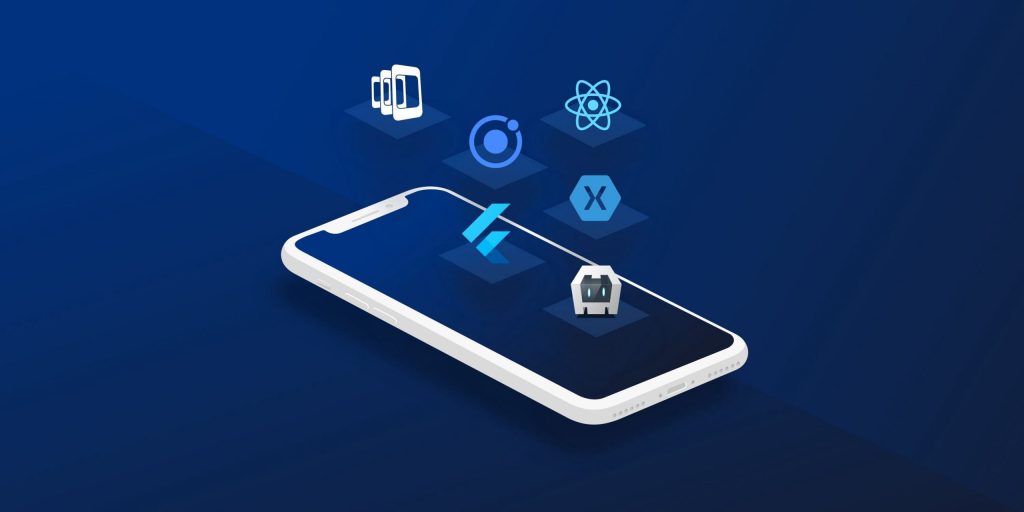
Knowing about the Changing Business Requirements
Businesses encounter challenges in acquiring knowledge of innovative tools and technology that enhance their ability to stay competitive in the market. For instance, companies face critical challenges such as a lack of communication tools and insufficient knowledge in employees to innovate and upgrade their facilities. Moreover, an ineffective business environment does not support organizational change and the need for employee training. Consequently, using traditional business approaches, models and tools further complicates the organizational business and marketing landscape.
The evolution of mobile app technologies has influenced businesses to gain significant knowledge of new business models and align their business approach with agile enterprise approaches. These modern strategies involving digital transformation help companies to redesign business processes and optimize their business operations and workflow.
Serious Security issues in the Application
An enterprise app handles complex company data and information such as account details, company information, and social security numbers. Therefore, it implies that the enterprise app should have robust security features that protect business data and prevent security breaches.
Companies are required to employ periodic app vulnerability tests that safeguard business data and prevent security risks. The test also examines the app backend development, server, and other security systems. The other data protection strategies include employing user permissions and user information privacy protection that do not permit unidentified entities to access the company’s security system and steal important data.
User Interface Complex Designs
The user experience with enterprise applications can make or break the business. App. If the UI interface of the application is not appealing, it would certainly fail to attract end-users. Boosting online brand visibility implies corporate firms create well-designed apps with eye-catching designs, colors, and typography that catch a broad audience’s attention. Additionally, developers should also consider using innovative, and industry-standard app designs that help create user-friendly interfaces. Hence, creating a well-structured, intuitive UI improves consumer usability.
The cost of developing a business app
Cost to create an app is a key challenge for companies. Creating an enterprise app is a time-consuming process, and more expensive than a traditional in-house project. The creation and designing of the app demonstrates higher costs during the production and development stages. Once, the app reaches completion, it is integrated with modern IT tools that further build up development costs.
Underscoring the significance of reducing developmental costs implies businesses carefully make cost estimation and management that diminishes app development costs and ensures app project viability.
Finding the right app development agency or outsourcing the app project
Developing high-efficiency apps implies companies search for the right resource that consists of experts, designers, and developers. It is one of the biggest challenges that companies face when designing an app for their business. Companies have two options. Either they take assistance from third-party services or search for a reliable mobile app development agency that has proven records in mobile app design and development.
If a business lacks modified infrastructure, it becomes difficult to manage business and management operations. Therefore, many companies plan to integrate third-party services that provide updated IT systems, tools, and applications that build collaboration between employees and different departments. Moreover, outsourcing an app project also eases the development process. A team of experts comprising developers, programmers, and app testing professionals competently handle all the development procedures.
Similarly, hiring services from an innovative-driven app development company also benefits enterprises in building a scalable and practical application.The app developers have relevant experience in app development such as creating innovative layout designs and designing other app components. An app development company utilizes agile technologies such as AI Machine learning and AI algorithms that help in app planning, designing, and execution. Additionally, incorporating an iterative development model helps in app maintenance. It detects bugs and other irregularities and fixes these issues during the development phase. From coding, testing, integrations, and app maintenance, the experts use additional resources and new technologies to build responsive and functional apps. Hiring services of a professional app development team manages the complete mobile app project. To transform the UI/UX layouts into a real application, an effective mobile app development team ensures that the app has optimum performance, high speed, and page loading time that improves the overall app quality in the market.
Conclusion
Given the fast evolution of mobile applications of diverse categories, it has become more challenging for consumers to gain relevant information regarding the application they prefer using. Consequently, it implies buyers extensively browse the consumer market and gain knowledge about leading-edge applications introduced in the mobile app development market. Online shoppers should have a vast knowledge of the application’s functionality, purpose, and benefits. The relevant information will help them select the right app category that resonates with purchasers’ choices, and buying trends. The most popular apps employed by users are consumer apps and business apps. The apps having advanced features and technical infrastructure have maximized the usage of the newly developed apps. Consumer mobile apps include numerous types such as gaming apps. Using productivity apps helps in conducting virtual meetings and task management. Health and fitness apps have gained popularity as people use different fitness apps to track diet and exercise and promote mental well-being. The rapid growth of e-commerce apps such as Amazon” and eBay has facilitated online buyers with convenient shopping and easy online payment options. In contrast to consumer apps, enterprise apps have a different role. The apps streamline corporate processes and operational and management tasks. The apps allow companies to manage their financial transactions, manage business data, and modernize workflow. Both consumer and enterprise apps have empowered consumerism through digital platforms. The apps have influenced consumer behaviors and brought online entrepreneurship opportunities to businesses. The apps continue to facilitate small, and medium-sized businesses, and established firms to streamline operating processes such as payment management, and market research, and improve customer engagement. Using a company-level enterprise app allows marketers to plan appropriate business strategies and manage business process management efficiently.
- June 12, 2024

The ever-changing mobile technological revolution has significantly impacted business paradigms. Entrepreneurs, knowing the potential benefits of mobile applications employed a vast array of modern applications to perform various tasks. From gaming to retailing, e-commerce, business, marketing, management, health, fitness, music, and social networks, mobile app development companies have found more innovative success in building trendy apps that have brought convenience to users and boosted their personalized experiences with mobile applications. Recent statistics provided by 360 Research Reports indicated that the mobile market worldwide is expected to rise at a substantial rate during the year 2024. Today, a total of 35.5 billion applications are downloaded by mobile users. The global Mobile market size is estimated to reach USD Million in 2028. With the introduction of the App Store, companies have categorized mobile apps into consumer and business apps that help boost personal and professional utility.
The creation and designing of a simple mobile app takes approximately 3-6 months. Regarding the rising cost of application development, the creation of digital applications counts on different factors. It includes technical resources and complex features, the integration of innovative features, hardware, and industrial resources.
Let’s suppose, you are planning to generate popular gaming applications. Various gaming apps including 2D or 3D games, in-game currency, and games having special items or characters have been widely used by gamers for their accessibility and convenience. As more users have become accustomed to playing these fantasy games, the companies have invested high accounts in crafting numerous game apps. It is estimated that the creation of an average mobile gaming app costs about $37,500 due to highly custom designs, niche features, complex coding language, and logic. A basic application having simple features and essential functions may cost from $20,000 to $60,000. As the complexity of mobile games increases, the development cost upsurges equally. Moreover, using the game engine and tools and opting for targeted mobile devices and platforms such as native or cross-platform development also increases app development costs. Once you have completed a gaming app, you require additional costs for app maintenance, app launch, and advertising increases the costs. Consequently, breaking down the development cost of a gaming app allows companies to analyze the factors that help increase or decrease development costs. It implies setting a realistic budget to develop high-quality gaming apps.
Let’s analyze the factors that impact the cost of mobile application development.
Key Factors That Influence Mobile App Development Cost
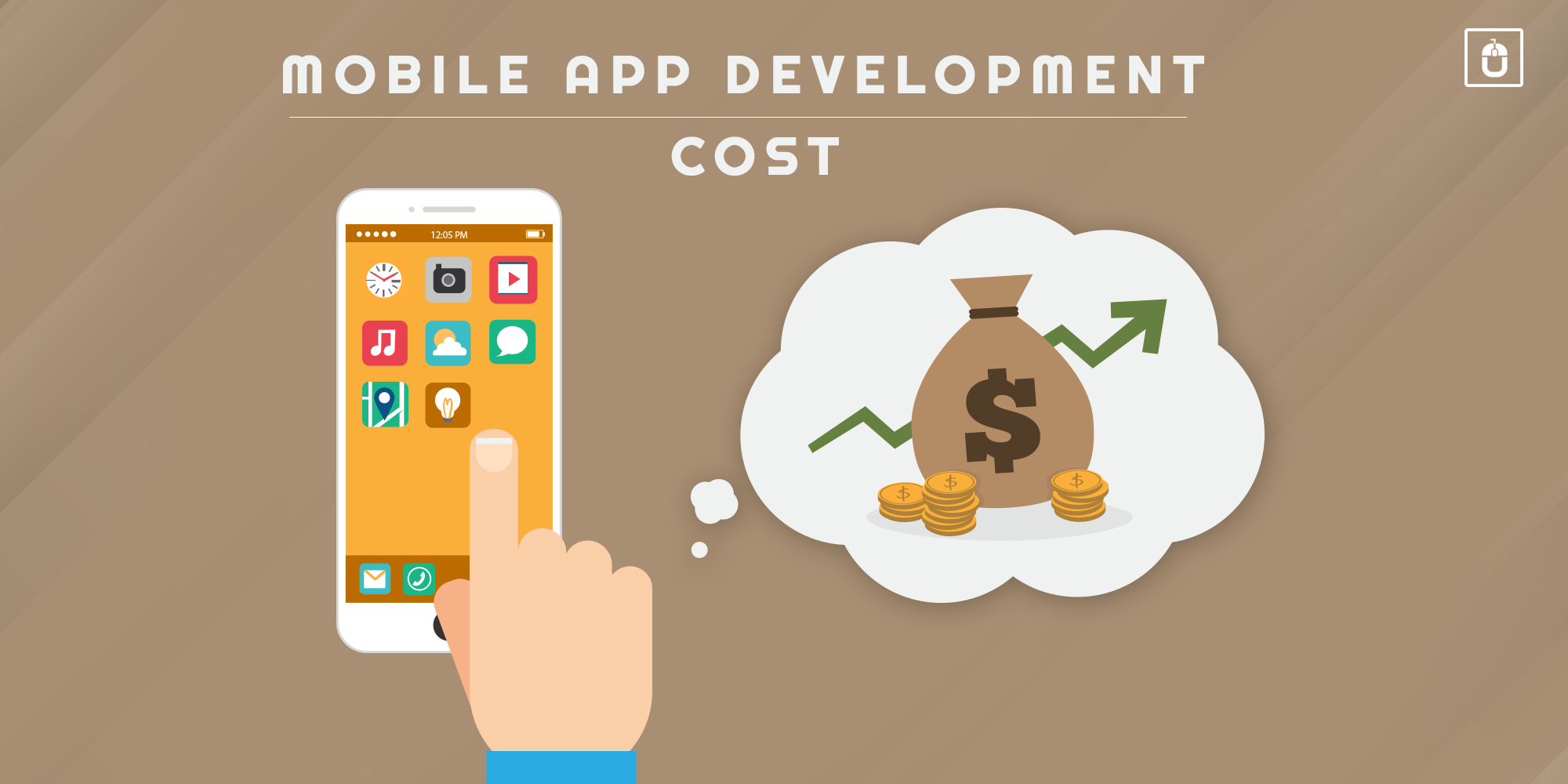
The factors include analyzing the complexity of app components and features, the development time to build the app, various app categories, interface designs, animation, and unique app designs. Other aspects comprise choosing an app platform for app testing and deployment, technical resources used for app maintenance, and the size of the development team.
Apps of diverse ranges
Consider apps of varied types including simple, medium complex, and multifunctional applications. A simple app comprises basic user features including a friendly interface and dashboard that makes navigation easier for new users. Moreover, an end-user flexibly logs in to the application and searches different sections. A responsive app providing a user profile facility, offline capabilities, and push notifications increases user engagement with the app.
High expenses are also associated with developing a medium-sized app. It includes features such as tools and infrastructure, trading and marketing, social media, payment gateway, and audio/video streaming that build up app creation costs.
Incorporating App design features
The app design features include a visually appealing UI. The user interface with striking color patterns, animations, visual effects, and well-crafted logo design requires vast resources and design skills to develop customized common UI elements. The apps having nominal design demands are cheaper than the apps having extensive UX designs. Moreover, adding new features also increases development overhead.
App platform
The app developers are required to choose a reliable platform for app creation. They can opt for the Native app platform. Developers employ Swift and Objective C to create iOS applications. Android apps are created using Java and Kotlin programming languages. Another choice is using a cross-platform application. It is a cost-effective platform involving developers to create a single code. A particular code helps to create numerous apps that seamlessly run on different mobile devices. Moreover, the codes can be reprocessed to develop new Android and iOS applications for diverse platforms. The cross-platform comprising Flutter and React Native platforms are widely used for app development. Developers can also opt for a Hybrid app platform. The platform is a combination of both native and web apps. However, it is more cost-efficient in contrast to native apps.
Hire professional assistance
Another significant factor is hiring a reliable app development company that facilitates businesses with a smooth app development process. The application development services have highly competent app developers, UI/UX designers, project managers, and market specialists who offer high-quality industry expertise to create robust applications. They also integrate the latest features and technologies in developing high-powered applications that are compatible across different mobile devices and platforms.
Developing team expertise
Some designers may charge hourly rates to perform design tasks. While some developers charge monthly. The rising labor cost directly impacts the budget requirements of app development companies. The costs also rise depending on the geographical location of the team. If the company is based in a small area with employees having lower wages, it helps to reduce the project costs. In-house developers employ a mathematical approach to the coding process and employ fewer resources to build scalable mobile apps. Consequently, using cost-effective app-building resources lessens development cost ranges. In comparison, large firms employ experienced designers who charge hourly rates based on their seniority level, experience, and qualifications. They also charge high if they are working on complex projects using different programming languages. Hence, development cost rates accelerate employing the above-mentioned factors.
Ongoing Maintenance Cost
An app requires ongoing maintenance even after the app gets launched. Apps require regular monitoring to keep the app updated. Developers identify bugs, viruses, and other malfunctioning defects after the app is published. Using advanced technical tools to fix bugs increases app maintenance costs. Adding new design features including eye-catching layout designs and interface versions, and updating the navigational buttons increase infrastructure costs. The cloud hosting fee and cost of other technical tools also mound up over time. Thus, companies have to face long-term post-launch costs as well.
App publishing costs
After having built apps, companies are also required to make app store payments. It implies developers pay a one-time fee before submitting the app to the Play Store.
Analyzing Cost Breakdown Stages of App Development
See how app development costs add up. Break down expenses by stage for smarter budgeting.
Pre-research -Conducting targeted market Research
As companies plan to build a new application, the initial step involves executing extensive market research. Pre-planning and targeted market discovery help companies perform market analysis. They acquire essential knowledge related to the market dynamics including the choices, interests, and the changing buying trends and behaviors of consumers. During the initial stage, development firms should prepare competitive analysis, MVP concept, user market research, and develop business plans highlighting business and application goals. Having a clear app development roadmap helps companies create engaging apps that resonate with consumer’s choices and perceptions. The cost of the initial stage is projected as $1,200 – $11,000 while developers complete their pre-research phase within 2-4 weeks.
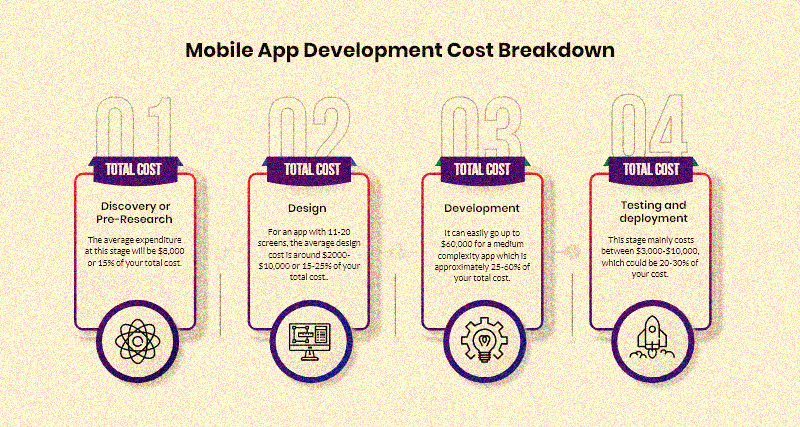
Evaluating App Design Cost
During the second stage, the designing team estimates the cost of integrating modern software, prototyping, wireframing, and visual (UI) designs. To boost user engagement with the app, developers use startling app designs. The layout color combination, typography, graphics, and animation develop high-featured applications that stand out in the marketplace. The cost of investing to develop a simple UI/UX app design may rise to $10,000, In case, if developers come up with medium apps, the cost might reach $60,000. The cost of designing a complex app will be 25-60% of the total development and design cost. The total estimated cost is anticipated around $2,500 to $10,000 along with 3-4 weeks for the designing stage. Thus, many companies intend to invest in app design as stunning and responsive applications attract a broad audience.
Considering the Testing Stage cost
Further breakdown of app development costs allows developers to invest the amount in testing the app once the app finally reaches the market. The testing phase employs the latest technology testing tools that upsurge costs between $5,000 to $10,000. It is considered 20-30% of the total development cost. Developers spend 2-4 weeks performing app testing.
Maintenance and debugging
The newly built app requires continuous maintenance and updating of the app components and system to remain functional in the market. Therefore, developers get engaged with extensive testing of the app on a variety of devices and platforms. It takes 2 to 3 weeks to monitor the app functions and identify the bugs and other defects that make the app slow and unresponsive. Using different debugging tools efficiently fixes these issues, it increases the average app debugging cost. The anticipated cost a mobile company face is $5,000.
Project management costs
The costs of app project management begin with the preliminary phase of pre-research market analysis. The cost targets include using technology tools for cost analysis and accounting. Moreover, developers also carefully estimate the cost of planning, creating, and designing modern mobile prototype applications. The entry-level cost plans start with $5 to $12+** per month. Project managers integrate additional features such as robust security of data, advanced reporting, editing and refining the document, and workload management. The other features include real-time messaging, file sharing, discussion forums, emails, and chat platforms that improve communication among the teams. Using high management functionalities in the app. Total project management cost ranges from $50,000 – $100,000.
Average Costs for Different Types of Apps
Explore how app complexity impacts development costs.
The cost of developing a Business app
The next part of evaluating the cost of app creation implies developers consider the overhead costs of creating and designing apps of different categories. If you are an experienced entrepreneur, you must be aware of the price, and cost of developing enterprise apps. Today, many corporations are investing in creating business apps that execute structural, commercial, and business tasks effectively. Moreover, enterprise apps boost the skills, vitality, and efficiency of teams.
The price of developing an enterprise app varies with the application’s features and functionalities. The cost of developing a simple app is evaluated at $30,000 to $50,000. The building charges of a simple application comprise basic features, such as a user interface, simple user login process, basic configuration, calculator functions, and weather functions. The app completion phase is estimated between 4 to 11 weeks. The development of complex apps ranges from $100,000 to $250,000. It comprises advanced features, such as third-party integrations, real-time updates, push notifications, and cutting-edge user interfaces. Integrating these innovative features increases development-related expenditure. The complex apps involve an extended time such as 7 to 16 weeks for app development. Companies also face huge investment cost that ranges from $40,000 to $300,000.
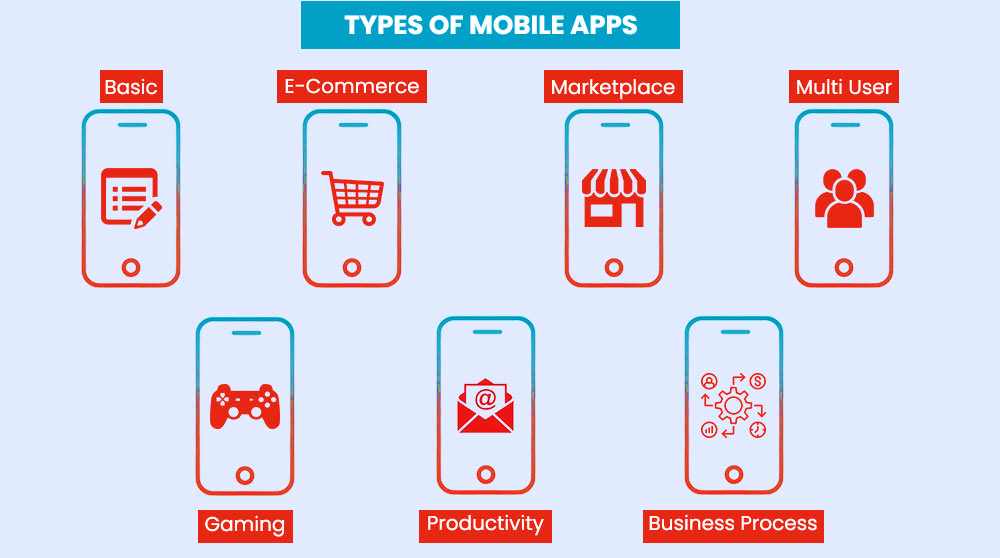
Cost of Innovative Data-Driven Apps
The construction cost of data-driven apps is anticipated at $25,000 to $80,000. Since the apps comprise advanced data processing and analysis tools, their developmental, designing, and innovation costs continue to vary. Data-driven apps comprise various apps such as calendars, weather forecasting, maps, data management, and integration systems. Thus, the key app features influence the cost of developing data-driven apps.
The Development Cost of Social Network Apps
If you plan to increase brand awareness, developing a social network app is your best choice. The cost of creating social network apps of different categories varies due to different functions. A simple app having an easy account creation process, user profiles, in-app messaging, and calendars. The cost of simple app creation is estimated at $30,000 to $60,000. The rate is comparatively low as compared to other apps. The apps with complex functions such as employing the latest UI/UX design, photo and video uploading, search features, real-time updates, and push notifications. Security features, development team size, and selecting the app platform are the other elements that accelerate developmental expenditures. Adding more advanced features such as live streaming, organizing events, social interaction, and messaging of groups or communities increases the cost of social media apps up to $30,000 to $1, 00,000.
Development expenditure of e-commerce Apps
An e-commerce mobile application facilitates entrepreneurs with trading, buying, and selling of e-commerce goods. Creating a basic e-commerce app requires startup e-commerce businesses to set the lowest developmental cost, ranging from $5,000 to $50,000. Medium-sized e-commerce companies develop mid-range e-commerce apps. The cost is anticipated as $20,000 – $120,000+. Depending on the complexity of app features such as creating the latest user interface (UI), responsive design, adjustable app screen, app coding, and using complex programming languages help in mobile app performance optimization. The other significant features comprising inventory management, secure transactions, and multi-platform support escalate the app creation cost by $120,000+.The app maintenance and debugging features costs are estimated between $5,000 to $20,000. The post-release app support and app upgrade require a cost such as $1,000 to $5,000 per month.
Gaming Apps cost
Mobile gaming application enables users to interact with friends and play fantasy games. Various captivating games keep users mesmerized in the game. Creating simple 2D games to complex games requires game development companies to analyze the cost of generating games of different categories. The estimated cost of building gaming apps varies from $30,000 to $2, 00,000. Simple gaming apps comprising casual games or immersive games have lower costs such as s $25,000. In contrast, gaming apps with striking designs, heavy graphics, animation, and 2D and 3D experiences with multiplayer functionality have high development and design costs. Moreover, apps with high processing power, a complex UI, and other navigation buttons also upsurge development expenses. The high cost is anticipated at $50,000.
Ways to Lower App Development Costs
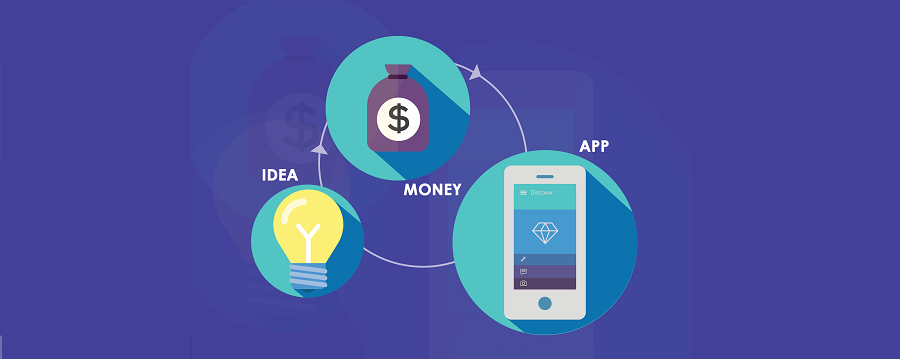
Carefully Plan the Development of your App using Product Requirements
Whether you intend to develop consumer or enterprise applications, you are required to consider the element of the product requirements document. PRD keeps the company and the clients aligned and helps them know a company’s business and marketing goals. Product requirements further assist companies in setting their expectations and budget requirements to build the app. Consumer vs. enterprise mobile apps cost varies depending on simple to complex functions. Therefore, formulating a written document mentioning detailed application details will help companies evaluate the cost required to incorporate various resources, tools, and technology for app building. Moreover, a finalized list highlights the required elements such as essential features, adding innovative UI design along with graphics and animation.
Companies provide an average estimated budget to manage developmental and design costs. The product requirements document also states the cost of testing and app deployment. Moreover, developers mention timelines for development and the app development platform chosen to create, design, and test the app. Hence, planning an app development budget allows developing teams to manage their project budgetary cost.
Making app prototypes
Another initiative that helps reduce development costs is building a practical prototype of the mobile app a company plans to launch. Mobile app prototyping allows designers to analyze various cost-effective resources including digital tools used for app designing. They also introduce digital solutions, and the latest features along with providing overhead costs of app creation and designing. Hence, employing agile methods such as mobile app prototyping helps create responsive and optimized applications.
Outsourcing vs in-house development
Let’s suppose, you plan to develop a high-performance application but your in-house development team lacks the technical resources to develop a high-tech application. In such a case, you can opt for another better solution. Many companies outsource their app development project to a reliable third-party development partner. Outsourcing allows companies to get connected to various outsourcing companies. It makes it easier for companies to select an outsourced partner that charges lower rates for app creation and design. Hence, delegating tasks to a third party decreases development costs, minimizes developmental risks, and improves app accessibility in the mobile app development market.
MVP reduces developmental expenditure
If you are running a startup firm and desire to create a cost-effective app, you can develop a Minimum Viable Product (MVP). It has proved to be a functional strategy for startups to identify their potential strengths and weaknesses and build high-efficiency apps. MVP development involves different stages. From analyzing the feasibility of the app to underlining various app features, developers perform in-depth MVP app testing before finally launching the app into the market. The significant aspect of MVP is that it addresses the financial challenges that many startups face. Therefore, it helps companies develop medium-sized apps having a minimal set of features that boost user engagement and also reduce development expenses.
MVP keeps development costs low since the earlier stage of app development. Developers create a few app features and ask for customer feedback regarding app usability. Consequently, gathering genuine consumer feedback helps designers analyze product defects, employ robust testing tools, and add innovative app designs to enhance app value in the market. Hence, MVP provides a comprehensive roadmap to companies, lessening costs and expenditures and expediting the app development process.
Utilize Agile Methodologies
Employing AI Machine learning in the app automates various tasks. It implies developers using an iterative development model consisting of planning, analysis, and execution using advanced featured testing tools. Agile app testing identifies bugs and also fixes these issues at an early stage. Consequently, it reduces the cost of rework and saves time in early development phases.
Marketing and promotional tactics
Companies can reduce app marketing costs by employing various techniques. It comprises using A/B testing to execute different marketing campaigns. The app marketers use email campaigns to send promotional emails to a vast audience. The emails include videos, newsletters, and guides that highlight app features and benefits of application for diverse users.
Recently, A/B testing has been added to develop engaging Facebook ad campaigns. Running cost-effective Facebook ads engages more audiences. The users easily browse the social media page and read additional application features. Using captivating text and eye-catching visuals in mobile app marketing campaigns creates seamless, personalized experiences with the application. Thus, choosing an appropriate social media channel for app marketing grows brand visibility and makes the app stand out in the competitive app market.
Conclusion:
The evolution of new apps has benefitted companies with flexibility and convenience, however, the influx of millions of applications has also accelerated the developmental cost. The app-building charges have significantly impacted the financial resources and operational efficiency of the organizations. Research shows that the cost of an app varies according to the production and development stages, app designing, and integrating the latest app functions and technology. Additionally, the cost of app development also comprises using modern application architecture, data encryption, and storage capacity and, third-party integration. Developers should choose the multiple platforms that support various applications. They can opt for Native apps, or cross-platform that facilitate cost reduction. Testing tools include the cost of utilizing various testing tools to improve app functionality. Another major cost the company faces is hiring a skilled and experienced app developer. App upgrade also builds up the cost. As marketing trends are changing, businesses intend to bring diversity to app creation. It includes adding new app features, and regularly monitoring the app for maintenance and incorporating updates. To boost user experiences with the app, companies utilize agile tools that potentially lead to increased costs. Thus, fostering a culture of innovation and cost awareness enables mobile development companies to develop high-standard, fast, and scalable apps using cost-saving solutions.
- June 7, 2024

The changing realm of mobile app development allows businesses, marketers, and app developers to embark on a journey of innovation. App developers and mobile application companies have come up with fast-track and productive apps that have reshaped the app development industry and simultaneously responded to rising user expectations. Having no bounds for creativity and innovation, the app developers have incorporated modern techniques to build outstanding applications. The infrastructure components of the app include a well-designed and intuitive layout, and friendly interface, an amazing background with vibrant colors, and a lively screen. The versatility and accessibility of the apps require businesses to integrate modern application elements that help to optimize the application functions including speed and performance. In addition, mobile app performance optimization signifies developers enhance the efficiency of mobile applications by improving memory and elevating application responsiveness, page loading, and launch time. Leveraging hardware acceleration, the integration of multicore CPUs and other hardware resources such as a video card, an audio card, and the graphics processing unit (GPU) optimizes the app’s performance.
The programmers assimilate the cloud-native architecture, microservices, APIs, and (CI/CD) technologies to improve system reliability. Using a cross-platform framework such as React Native and Flutter optimizes the app’s functionality including data encryption, and authentication, code optimization, image compression, and removing caching.
Whether you are a seasoned developer or a potential entrepreneur, developing high-powered mobile apps in a competitive mobile app industry appears to be a challenging task for you. Having a glance at this informative guide uncovers vital insights and strategies that help developers navigate the mobile market to optimize app performance.
Understanding the Blog’s Purpose for Targeted Audience
The initial part of the article facilitates programmers to know the significance of mobile app performance optimization, and how it improves user experiences with the app. The article lets developers comprehend the key performance metrics comprising load time, memory, and speed of the device and network performance. Moreover, developers analyze hardware processing units such as video cards, audio cards, and the graphics processing unit (GPU) that maximizes the device’s performance.
Flipping through this knowledge-based paper allows system analysts to gain knowledge related to a variety of app features. The app programmers learn to focus on enhancing the aesthetics of application components. It includes creating an eye-catching layout, and intuitive and user-friendly interface. Developers also analyze the crucial interface indicators such as creating a minimalist UI interface with innovative designs and maintaining the balance, and symmetry of the app display.
The inexperienced developers can comprehend the essential factors that adversely impact the app’s speed, cause prolonged loading time, inefficient coding system, and slow server response time. Programmers learn about employing practical strategies that optimize the app speed.
The next section highlights the importance of fast load times and helps developers know the factors that cause delayed load completion. The article provides helpful strategies for software engineers to develop fast page-speed insights. The common approaches for app optimization load time include code optimization techniques, image optimization, asynchronous loading and code splitting, and content delivery networks (CDNs).
App development experts gain knowledge of managing app memory. The comprehensive guide allows developers to delve deeply into the topic of memory management. Knowing about the primary functions, and significance of memory resources helps developers track each byte of memory in the device and learn ways to allocate more memory space to efficiently store large amounts of data. The section also explores memory management issues and challenges that slow memory access, disrupt the processor’s functions and even lead to app crashes. To let multiple processes run smoothly, and increase specific memory spaces in the devices developers implement memory optimization techniques. Garbage collection strategies, object pooling and reuse, profiling and memory analysis tools, and optimizing data structures are significant performance optimization strategies.
In this guide, IT experts and programmers acquire significant information related to of responsive network performance of the app in real time. This segment discusses common challenges that affect the network performance of the device. It includes high bandwidth usage that lessens internet speed, inadequate network visibility, and connectivity errors that cause malfunctioning of the devices. Furthermore, knowing about strategies that help to establish optimal system performance implies developers execute caching mechanisms, prefetching and predictive fetching, and use compression techniques.
Effective mobile app optimization testing strategies mentioned in the article allow developers to know the testing procedures based on the specific requirements of each app. Employing testing and launching tests help developers create highly scalable applications.
Mobile developers learn about common rendering issues comprising excessive layout recalculations, and redundant animations. Following appropriate strategies such as hardware acceleration and GPU rendering, layout optimization, and curtailing UI thread workload help boost user engagement with the app.
To embark on a journey that leads to mobile app development innovation, the article explicates innovative approaches for programmers and app developers to enhance their app development skills and learning. The article urges new app developers to remain updated concerning new app developments emerging globally. Furthermore, utilizing their productive entrepreneurship experiences, and employing agile development methodologies will help build real-world applications that help to elevate the app’s functionality and boost user engagement.
Understanding Mobile App Performance Optimization
In the advanced age of wearable app development, companies have invested in creating millions of applications with intuitive and user-friendly features and peak network performance. The effectiveness of a mobile app implies the app features resonate with users’ choices, needs, and trends. With the explosion of mobile devices in the market, app optimization has become crucial to boosting user satisfaction. According to Google statistics, nearly 70% of mobile users expect to acquire standard mobile apps with high-performing functions. Many mobile apps fail to give high performance due to several factors. It includes slow app performance issues, inappropriate page loading, delayed registration processes, a user-unfriendly interface, and unresponsive Android navigation buttons. If the app continues to show inconsistent performance, it fails to engage new customers. Moreover, the app users lose interest in using the app and search for reliable applications that meet their requirements.

Insufficient application functions reduce an app’s download rate and fail to attract more leads and bring high traffic to the landing page. If you desire to increase user engagement, you are required to develop higher-potency applications. The success of your application relies on employing techniques such as tiling code optimizations for GPUs and leveraging heterogeneous multiprocessors, and other robust features that deliver quick, and smooth app performance.
What are the Key Performance Metrics that Influence the App Speed and Performance?

Optimizing App Load Time
Let’s suppose, your company launches a new app. The first element that they observe is the app load time. App load time optimization signifies the time an app takes to launch and become fully functional. The users expect the apps to have quick loading time and high speed. Relying on the loading speed, the users form their perception of the app. For instance, if the apps have fast loading speed, consumers form a positive opinion about the app’s reliability, speed, and efficiency. While ineffective apps perform slowly. Even, a few seconds of delay increases their frustration and may decrease app engagement. The companies ensure appropriate app load time that enhances overall user satisfaction and leads to a smooth user experience.
Identifying the key reasons that slow down mobile app performance implies developers analyze various factors. A common issue faced by mobile apps is high network latency. Sometimes, it takes a longer time for data to travel between the client and the server due to distance, bandwidth, and the congestion of the network. Network latency causes interruptions in loading data and web pages. The app works slowly if the server load is too high. Heavy server loads take place due to unnecessary processing requests, and distributing servers that down server response time. Unoptimized coding causes bugs, viruses, and other security risks that further deteriorate app speed and response time. The other factors that cause underperforming application behaviors are inefficient database performance, inadequate layout designs, and malfunctions of other app components.
Some actionable steps may help app developers to enhance app productivity.
Code optimization techniques
Developers can implement various code optimization techniques such as selecting a suitable algorithm and data structure that improve the app run time. Loop optimization allows programmers to handle coding errors and other loopholes in the codes. It includes removing unnecessary characters, white spaces, and comments in the code. and also eliminate redundant calculations in the coding system. The other significant strategies comprise code splitting and, compiler optimization. The metaprogramming of C++ used in compiler optimization enables programmers to create and compile codes competently.
Image optimization
It implies developers compress images for mobile websites that fit the screen size of the mobile app. Developers are required to employ an appropriate image format such as JPEG, PNG, and GIF that improves the image quality. Many app designers use WebP image format. The latest format using the lossy compression method, automatically condenses a single image into smaller compressed files.
Implementing Asynchronous Loading Strategy
Another significant technique is asynchronous loading. It implies development experts to load web resources such as images, and visuals in the background. It quickly uploads the page content and does not block the rendering of the page. Hence, it boosts the overall page load time.
Utilizing Content Delivery Networks (CDNs)
Using the Content delivery networks (CDN) technique suggests app testing teams choose a CDN provider that supports the application’s requirements, and geographic reach, and enhance the app’s performance. Developers should configure their CDN settings, and set up origin servers. Extensive network architecture is spread across various data centers around the world that deliver web content, images, videos, and other essential data to the users. CDN also integrates other Google Cloud services including Google Cloud Storage, and Google App Engine that increase app scalability, reduce latency, upload traffic from origin servers, and allocate high-quality content to varied geographical locations.
Managing App Memory
Elevating the performance of mobile apps implies program designers employ app memory management techniques. Managing memory in applications and operating systems signifies developers organize files and data on a processor or mobile device. They boost system performance by diminishing system latency, minimizing fragmentation issues, and checking space usage on the hard drive. Developers employ application memory management techniques to monitor each byte in a system’s memory. They provide a large memory space to let all the memory components function effectively. Since application programs consume large memory, they require additional code to handle the memory requirements of the processors.
Some common Memory management issues arise due to the complexity of application systems and the limitations of memory resources. Fragmentation is a significant challenge for app developers. Memory slot breaks into small pieces when the memory units are scattered to different locations. Hence, it makes memory fragmented and non-optimized. Another reason is memory leaks. Memory leakage issues come up when an application fails to free up memory and the available memory cannot be used by the processor. Memory leaks may lead to system crashes and data loss.
To keep track of memory space, developers use various strategies
Garbage collection
Garbage collection plays a significant role in memory management incorporating programming languages such as C# and Java. The memory management process serves as a memory cleaner that removes unnecessary objects from the memory. It aids developers in identifying and freeing up memory that is no longer in use and prevents memory leaks, and double deletion issues. Moreover, GC algorithms lead to effective memory utilization and improve system stability. As the tool is based on modern programming languages, it helps in streamlining the app optimization process. Garbage collection aids programmers in increasing loading time, and improves app performance issues.
Object pooling and reuse
Improving mobile app performance allows developers to optimize application speed by optimizing resource management. Employing an object pool pattern helps programmers boost the app’s performance by reusing objects instead of abolishing them. The application experts have access to a pool of reusable objects. This pool pattern manages the lifecycle of objects including object creation during the initialization phase. When an object is formed, the object pool analyzes whether there are any unused objects. The programmers reset and clean them for reprocessing. Though the process is time-consuming for developers, it assists them in managing resources. Hence, the object pool pattern ensures adequate resource management, increases app scalability, speeds up the app’s loading time, and significantly improves application server performance.
Profiling and memory analysis tools
Let’s suppose, you have launched a new application, you expect that the code performance and other functions run smoothly. An effective way to evaluate code performance is by using profiling tools. The profiling procedure includes mobile app CPU usage optimization. It examines different metrics comprising CPU, and memory usage, and analyzes code execution time. The tools help coding experts detect flaws in codes that cause slow response times, and reduce app speed and memory leaks. Moreover, employing performance profiling tools also pinpoints excessive resource usage. Consequently, the profiling tools benefit programmers by providing real-time monitoring of the app. Detailed performance reports help programmers know the performance blockages, the compatibility of different programming languages, battery consumption optimization, and code efficiency. Thus, the tools benefit developers, allowing them to implement performance profiling strategies that optimize app coding, improve resource management, and accelerate the overall performance of the application.
Optimizing data structures and minimizing apps
Managing the challenges of optimizing data structures for applications suggests developers use a network flow algorithm that optimizes asset allocation. Leveraging the built-in data structures and algorithms enables developers to manage an adequate amount of complex data, and ensure secure data storage, retrieval of data, and UI rendering. Using data structures in a paged database minimizes page faults of the specific applications, and proficiently organizes data within an Android app. Moreover, the data structure techniques help programmers create simplified database structures, optimize resource usage, improve response times, the app speed, and efficient memory management. Hence, algorithms develop cloud-based applications with improve app speed, and loading times, and ensure a seamless user experience with the app.
Enhancing Mobile App Network Performance
An inexperienced programmer during the Android app development phase deeply analyzes app performance and stability issues or network failure issues. App network performance optimization implies developers analyze several networking problems faced by the users. For instance, login issues, connection errors timeouts, and other connectivity issues take place due to employing heavy UI processing. Moreover, connection errors cause abandoned sessions, reducing the app speed and loading time. Network congestion blocking network misconfigured app components causes network performance regressions. To overcome network failure, programmers are required to implement optimizing network performance approaches.

Caching mechanisms
Effective data caching in apps is significant for minimizing latency and reducing transmission costs. An app cache optimization process involves storing big data comprising files or data records in an application memory. The caching strategy maintains a balance between data loading and caching. Developers securely store confidential data and ensure that the outdated data is eliminated and changed with the latest data. Thus, caching improves database performance, increases app scalability, offers cost-effective data distribution, and reduces app load and latency.
Compression techniques
App network performance optimization implies using developers employing compression technique that minimizes the size of data including files, documents, or data. The tools condense the file size keeping the original information safe in the database. If developers find repetitive elements in data, they make changes by employing the principle of redundancy. This feature places references to avoid doubling data in the content. The other feature Irrelevancy removes unnecessary data.
Many hybrid mobile app development companies use Lossless Compression that ensures zero percent loss of data during the compression process. It restores the file data in its original form once it is decompressed. Conversely, the other method, Lossy Compression eliminates the information, records, and documents, and does not bring back the original form of the file after decompression. The method is also known as irreversible compression.
Using Web Sockets and HTTP/2 protocol
The app programmers use Web Sockets and HTTP/2 for executing mobile app latency reduction. Web Sockets develop smooth communication between a client and a server having a single TCP connection. It signifies that both parties can directly send and receive data at any time. They are no longer required to wait for requests or responses. The tool is suitable for settings that require low latency, and high input.
The other tool employed by programmers is HTTP/2. The protocol improves the app performance, using different tools such as multiplexing, header compression, server push, and stream prioritization. Based on the request-response model, HTTP/2 allows developers to create multiple concurrent requests and responses that are sent over a single TCP connection to the other user.
Web Sockets having robust network conditions, and low latency bring real-time communication to the users. HTTP/2 ensures compatibility, security, and flexibility of general web browsing for mobile users.
Mobile App Rendering Speed
Mobile app rendering optimization refers to UI rendering and animation elements that influence the loading speed of the app. The app users face slow rendering application performance issues due to several reasons. The compatibility issues exist during installation and runtime. It includes the operational system of the app that does not perform effectively. The device’s hardware consisting of RAM, CPU, or storage space is not powerful enough to run the app. The screen size is not adjustable, inappropriate color patterns, unfriendly interface, unappealing layout designs, animation, and navigation buttons make navigation difficult for the users. As users expect smooth and natural collaborations from the initial app development stage, the developers are required to address the common app rendering and compatibility issues.

The experts implement different strategies that compress videos and images and speed up loading times. The other UI rendering approaches include optimizing layout patterns. Developers should create simple and engaging app layout designs. The responsive UI is adaptable according to screen size, orientation, and display resolutions. Building lightweight, responsive, and visually pleasing applications attract vast users. Maintain visual consistency of the app such as color schemes, icons, and fonts. Developers also ensure uniformity in UI components such as buttons, menus, and text. Using optimizing image loading diminishes the size of files delivered over the network. It increases loading time and optimizes the app’s performance.
Performance optimization and the need for continuous monitoring and application refinement
The programmers and developers should stay updated with new platform trends. They should adopt the best practices and innovations that increase mobile app performance optimization. Advancements in application technology allow developers to know the latest mobile application trends, and features that can be integrated with their Android devices to develop high-efficiency apps. Modern app functionality having robust app speed, fast loading times, and innovative UI elements maintain app peak performance. Thus, optimizing the app efficiency boosts the overall app productivity and increases app engagement.
Recap
An efficient app may not take more than five seconds to load a web page or an image. Let’s suppose you have launched a new app, however, it constantly performs slowly. The app takes an extended time to load an image or content which makes users disengaged with the app. An appropriate app load time builds positive or adversarial insights regarding the app’s reliability, quick speed, and loading time. Consumers expect to use high-powered applications with robust functions. Conversely, if the app does not meet customer’s requirements, it reduces user engagement and retention. Either customers rush to exit or uninstall the application which leads to a higher churn rate. Therefore, developers should deeply delve into the grounds that make the uploading of heavy images, and visuals difficult. The key reasons cover, inefficient coding, slow server response times, and incompatibility of mobile devices. It might be possible that the app also works slowly due to heavy advertisements uploaded on the mobile website. Heavy ads consume excessive space on the webpage and prolong website page loading. Inappropriate animation and graphic design, and technical faults in hardware also adversely affect app performance. To manage these issues, the experts implement practical strategies for app optimization. Significant approaches comprise image optimization, code efficiency techniques, developing client-server interaction, data caching, and analyzing app layout, screen size, and other computability issues. App optimization facilitates businesses to optimize their resource usage, bring high organic traffic to the website, and optimize network performance that connects them with a wider audience. Thus, companies gain a competitive advantage by developing user-friendly cutting-edge mobile apps that increase customer engagement and help the app stand out in the competitive app market.
- June 4, 2024

Let’s suppose, you are managing a startup mobile app company, you must be struggling to develop an app that runs seamlessly on all platforms. Due to budget constraints, limited resources, and no access to cutting-edge technologies, it becomes more challenging for new software enterprises to develop apps for each operating system. Therefore, they search for reliable platforms that offer cost-saving and user-friendliness methods that merge their app and website on mobile devices. Furthermore, platform-specific application facilitates small businesses to build responsive and speedy websites. Developers use HTML and CSS programming languages that automatically adjust the screen size fit to the required mobile devices, desktops, and tablets.
One such emerging modern web capability is Progressive Web Apps. PWA enables small businesses to get the benefits of web development, mobile technology, and cutting-edge technology at a lower cost. Mobile app development services have built the PWA framework using modern APIs, and a variety of advanced features and capabilities. PWA offers an app-like experience to the users as it mingles a native mobile application and website in the device. Whether users are browsing websites on mobile devices, tablets, or desktops, the platform’s dynamic features assist both startups and established firms in developing new software infrastructure. Businesses create high-powered low-cost progressive web apps and build responsive websites. Hence, merging the broad reach of web and mobile apps within a mobile device increases user engagement.
PWAs work more efficiently than a typical mobile site! Let’s read the specific PWA features
- Searchability of PWA
To locate the Progressive Web App, users are not required to download or install the app from the Google app store. Instead, PWA is accessible through URLs and found through search engines such as Google or Bing. The users can even scan a QR code to install the framework. Hence, users can share PWA URLs through email, or social media, making it convenient for others to search and use the app.
- Offline network
Progressive Web App technology offers a variety of strong capabilities. Web applications have become more robust nowadays as they operate both as a web page and mobile app on the device. A significant aspect of PWA is that it makes a webpage or mobile app load quickly and run consistently on various platforms even with slow network connections. Moreover, the technology assists workforces in performing offline tasks. They can conveniently store data, and database files even if they are working offline. Offline capability also helps to retrieve the lost data through the local cache. Hence, offline network keeps significant data secured.
- Help create a robust and speedy webpage
Progressive Web App also assists in mobile app performance optimization. The web app monitors the app’s performance and ensures that the website runs seamlessly across different devices. Consequently, speed optimization reduces page load times, and minimizes the amount of data that needs to be transferred, and processed. The app facilitates users in filtering, or sorting out the important data from the database. Developers use compression, caching, and pre-fetching techniques that optimize the data flow, speed up page loading times, and increase app runtime.
- Managing large amounts of data in a web app
Companies leverage Progressive Web apps to cache data. It helps users to get access to charts, pictures, texts, visuals, and reports. Adding these interactive materials makes content more impressive for the users. PWA creates visually pleasing and interactive webpage content that keeps users immersed. Data caching allows users to scan the content, and review the images, texts, and other content before the page gets loaded. Thus, PWA is a powerful tool for re-engaging users and boosting the online visibility of the brand.
- App-like interface
The booming world of apps has brought new developments and advanced features in app development. The increasing dissemination of smartphones and mobile devices in the market has influenced app developers to bring innovation in app components to meet the growing consumer demand. Using Progressive Web Apps helps UI developers to integrate cutting-edge features for both web and mobile apps. Consequently, employing web technologies comprising HTML, CSS, and JavaScript, PWA developers develop stunning interfaces that resonate with user’s choices and interests. Designers analyze various templates of user interfaces. The UI prototype includes attractive layout designs, color patterns, visual feedback, and navigational bars that are comparable to native mobile applications.
The other app-like interface features include full-screen mode, swipe gestures, and home-screen shortcuts that offer a more immersive experience to the users. A responsive and functional interface design catches the attention of app users who view the interface on a small mobile screen or a large desktop monitor. Since potential audiences are familiar with using PWA for executing diverse tasks, it makes the app accessible to an extensive audience.
- The users have access to device features
A native mobile app comprising consumer vs enterprise mobile app features allows users to get easy access to mobile devices’ hardware and operating systems. In contrast, modern browsers find progressive web apps as more responsive, and interactive than native mobile apps. The users employing progressive web apps for various purposes gain a native-app-like experience. For instance, they have access to device features, such as cameras, microphones, and GPS. The users can gain access to device features using Web APIs. The other web app function, WebVR moves chats to virtual reality. Squoosh app, a web-based image compressor quickly reduces the size of the images and adjusts photo resolution that is suitable for a website or app interface. Developers use Web Assembly for effective coding. This coding function is now regularly used by modern web browsers. It runs codes written in multiple languages such as C/C++, C#, and Rust. The code runs seamlessly on the web.
- Robust security
Data security is another important feature of progressive web apps. Large corporate firms who have large complex data, prefer using PWA as strong security features safeguard user data and protect the app from security risks. The key security feature of PWAs is HTTPS which ensures that all data is safely transmitted between the user’s device and the server. Thus, confidential user data is encrypted and protected using HTTPS.
Benefits of PWAs for brand owners
Traditional web pages have a slow loading pace. Unresponsive website. without graphics elements, topography and outmoded content do not catch visitor’s attention. Moreover, it reduces users’ engagement. To optimize user flow on websites, businesses and developers look for exceptional platforms that function like systematic websites and apps. Progressive Web Apps combine the essential features of both websites and native apps. These specific web pages play a pivotal role in the digital mobile landscape as they assist mobile companies in building quick and responsive websites and apps.
How do businesses benefit from the Progressive Web app?
- Combining the web and app features
PWA integrates the features of a traditional website along with a mobile app’s functionality. The significant features consist of an App-like interface, easy installation, push alerts, offline usability, security features, on-page optimization techniques, cameras, GPS, and hardware access. PWA’s robust features benefit startup businesses and established organizations to manage their business operations, and boost consumer utility.
- Low Consumption of Data
When apps get excessively large with extensive data, it makes consumers frustrated and they search for an efficient web app that optimizes data consumption. Using Progressive Web App benefits both individual users and large businesses with secure data management. PWA takes up less space on a device to store data. To let devices gain more space for data storage, users employ the cache removal feature to get rid of irrelevant files and data from the local database. Moreover, users have the accessibility to store or download data while they are working offline. While downloading the files, clients do not reload the complete data. Instead, they search for the required information to be stored in the database. Hence, PWA prevents the risks of data exfiltration and ensures that encrypted data is stored and processed on the mobile device.
- Avoid app abandonment
If a digital app product lacks a strong UX design that is not appealing to the users, or the app fails to fulfill consumer’s requirements. Moreover, if users find the app installation process difficult or unable to navigate the app due to complex app functions. All these challenges lead to a higher risk of app abandonment. To increase customer retention, companies have the option of using progressive web apps. This exceptional website has an easy process of installation. The users can install them through the web browser on their device. The app is easily installed on the desktop or mobile device. Moreover, the users can also set up web apps on their device, desktop, or tablet via a URL. Hence, a smooth app installation procedure, easy sign-up flow, and navigation lowers user abandonment rates.
- Help companies avoid access to Third-Party App distributor
Businesses can reduce their app publishing cost by employing the Progressive web app. To let the app publish on a platform, mobile companies pay heavy amounts to third-party distributors. They comprise third-party app stores and vendors. The procedure is time-consuming and also increases publishing costs. Conversely, employing the modern web app framework makes app publishing smooth and seamless. Consumers and businesses use web browsing sites such as Chrome or Firefox to efficiently download the original version of the app. The users are not required to download new versions or create another authentication process. Hence, PWA eliminates access to third-party services and leads to smooth and consistent app publishing.
- App responsive architecture
Let’s suppose, a new mobile enterprise intends to boost mobile user experience. It implies them creating responsive and user-friendly interface designs that drive consumer’s interest in the app. Installing progressive web apps on mobile devices improves app function, and speed. The specific website assists developers in mobile app performance optimization. Functioning like a traditional website, the web app increases the page-load speed and app run time. Hence, a well-designed app with attractive and seamless user interfaces, optimized speed, and high loading time creates a friendly and interactive relationship with the users.
- SEO benefits for companies
The changing mobile landscape allows app developers to explore innovative platforms that improve their app visibility on online platforms. Installing progressive web apps on mobile devices and desk stops assists app marketers in improving app discoverability on digital platforms. PWAs optimize different online channels, allowing Google to measure PWA scores in search results. It helps bring more organic traffic and high conversion rates to the app’s product page. Thus, PWAs line up with mobile- SEO technique that increases the app’s visibility through organic traffic and increase app revenue.
- Push Notifications
Using progressive web apps, businesses also experience the benefit of directly engaging with the users. Push notification, a native-app feature sends relevant information to the consumers, and businesses on their mobile devices or webpages. In-app messages include conveying updates related to the app launch or informing users about upcoming sales incentives, discounts, and bonuses. Thus, the push notification feature keeps customers engaged with the app.
- The cost-saving approach of PWA
One of the key strategies that the company looks for is to reduce costs in application development. A progressive web app reduces the cost of creating an app. As PWA functions on different devices, it prioritizes the app features that resonate with the client’s interests and perceptions. For instance, developers create eye-catching layout designs and color patterns, adjust screen sizes, and generate simple and user-friendly navigation buttons. Moreover, PWA developers use native app cross-platform functions to create one-time code. A single code is created using multiple languages such as HTML, CSS, and Javascript and is consistently re-used to create numerous apps for different platforms. Hence, it reduces costs and helps companies develop high-performing apps.
- Remarkable performance in app development
Progressive Web Apps have displayed an outstanding performance in app development, offering cost-effective solutions to businesses. Companies that have employed PWAs have gained more benefits as compared to traditional web and native mobile apps. Their app speed is optimized and leads to faster page loading Moreover, the web app improves the runtime performance of the application and also keeps the app updated. Thus, strong security features of PWA safeguard the company’s complex and improve the overall app speed and performance.
Progressive Web App Examples
Starbucks
To expand its ordering system, Starbucks uses PWA. The offline facility of PWA helps consumers browse websites, and search for relevant products. They can read the menu, select items, and add products to the cart to place their orders. Using an efficient and quick PWA process benefits consumers as they can make purchasing orders even if they are offline. When service is restored, the users can instantly complete the order process and make online payments. Hence, using the robust and quick PWA ordering system offers a consistent, smooth buying experience.
Twitter Lite
Twitter, a fast-growing social media stream also employs Progressive web app to boost mobile engagement. It allows online shoppers to browse social media sites to review product details, instantly post their feedback related to the product, and share and retweet a branding message with followers and influencers. Today, most users access Twitter using mobile devices. However, they face certain challenges such as slow app speed, and delaying page loading. To offer a new medium of information sharing with users, Twitter employed the PWA framework. The web app integrates both website and native mobile app features that help create a versatile social media application. A speedy progressive web app with a fast-paced loading time and improved runtime helps users to actively share and tweet their messages on the Twitter platform. The exceptional website brings an exceptional browsing experience to the users.
Uber
A book riding platform also employs PWA technology. Uber has entirely restructured its traditional website by adding new features such as progressive web apps. The latest web apps have helped the company gain market visibility and increase the brand’s functionality in the competitive market. Consequently, the web app also facilitates the company managers to initiate various booking offers such as Uber Go, or Uber Business. By using PWA, users can book their rides even if the network is slow. As Uber PWA is versatile, people can access Uber sites via 3G or even 2G networks. Thus, PWA proactively addresses user’s needs, allowing them to interact with the app even if they have inadequate network and less storage capacity.
Social media users also prefer using Pinterest to share their artistic ideas, browse the site to read recipes, and search credible brands through pin board format. However, users face browser issues while surfing the site. The common issues include software malfunctions, slow loading time, and other website errors. Mobile users particularly face sign-up issues due to the low speed of the website on mobile. Observing the user’s inconvenience in website navigation allows the social media developers to renovate the existing features of Pinterest, a social curation website.
An upgraded Pinterest website provides rapid, and convenient access to the users to view the visual content, images, and videos in an easy-to-understand format. Progressive web app technology works efficiently as it assists the social media site in creating a high-efficiency product delivery model. Creating a user-friendly social media mobile app with advanced PWA features has encouraged more users to spend time navigating the mobile website. As the product site gets higher clicks, it brings more leads, and conversions and offers a smooth online browsing experience.
Tinder
An outstanding dating app, has more than 75 million global users. Earlier, users could only browse the app through mobile devices. However, the company has streamlined the application features by integrating progressive web applications. Having a native app and website functions, the Tinder PWA web app takes up less space. Moreover, it occupies less data as compared to native apps. Hence, it maximizes user engagement with the app.
Flipkart
Flipkart is a leading e-commerce site that incorporates Progressive Web Apps to enhance user experience across various platforms. Mobile users face different navigational issues as they navigate the app through their phones. Therefore, the company modifies the app structure and merges the native app and web into the device. Employing PWA technology in the Flipkart app provides a seamless online shopping experience to the users. Additionally, PWA offers offline availability to users with a fast loading speed, efficient data storage, and optimized website performance. Progressive web apps have enabled businesses to earn high conversions and get a higher re-engagement rate.
Washington Post
The Washington Post has developed a separate mobile web framework that functions like a native app. Progressive Web App installed by Washington Post offers app-like functionalities for mobile browsers. Utilizing PWA technology has benefitted the Washington Post to cater to a broader audience across various devices and platforms. The web app has streamlined content delivery, generates updated news, and creates informative articles for the users. Employing PWA allows users to get access to the latest articles and updates even if they have limited internet connectivity. Moreover, the web app optimizes users browsing performance even if they are offline. The cache removal feature gives adequate space to the app for data storage.
One of the key features of the Washington Post progressive web app is faster loading times. Readers look for prompt page loading times. The combination of Google’s AMP and Progressive Web App technologies has helped in mobile app performance optimization. PWA optimizes images and content and reduces file sizes without compromising quality. Consequently, using the lazy loading technique increases mobile page load times from three seconds to one second. The high speed and responsiveness of the web app attract more users to the site. Hence, PWA’s rich feature capabilities enhance overall user engagement.
Trivago
It is regarded as the world’s best hotel search engine. The company has a strong marketing position as it gains high revenue through web traffic generated through mobile devices. Employing fast and efficient progressive web app features has helped Trivago promote its services to a vast audience. The offline feature of PWA prevents service disruptions and provides a smooth web connection to the users. Even if users have low bandwidth, or are disconnected from the app, they have the accessibility to download and store data. The implementation of a progressive web app has proved to be outstanding for the company as it increased organic traffic to the site, conversions to 97%, and boosted online consumer engagement ·
Forbes
Forbes an American business magazine has recently employed Progressive web application to deliver updated content to online readers. The initial launch of the website had adverse consequences such as the site being too slow and heavy. It took extra time to download files, images, and videos. Moreover, online consumers face challenges in reading informative articles. To enhance user engagement with its online magazine, Forbes streamlined its standard site by employing the advanced web app framework. Earlier, PWA was only available to a limited section of the audience. Today, Forbes has a vast online presence as millions of members visit the site to read the latest informative content. As PWA has elevated the loading speed, the web users load an article in just 0.8 seconds. While mobile users have the flexibility to download the content in 2.5 seconds. Thus, Forbes Council Members benefiting from the cutting-edge features of Progressive web application add first-rate, informative blogs to the webpage. It has maximized web traffic and readership.
MakeMyTrip
An industry-leading travel firm attracts around 8 million visitors to the site. The robust PWA technology integrated with native mobile and website features empowers users with easy, smooth, and instant travel bookings with a variety of options. Businesses and individuals can make booking and payments using their mobile devices. Moreover, quick and efficient PWA functions assist the company with offering round-the-clock customer support. The web app has revolutionized online travel solutions such as prompt responses to customers’ queries, and the accessibility of booking flights, hotels, and holiday packages in just a few clicks. Thus, users gain a fascinating browsing experience.
Recap
The advancement of global tech‚ and the expansion of mobile app development in the market have influenced users to streamline workflow and business processes using innovative web applications. The development of PWAs has revolutionized the mobile web landscape, offering advanced functionalities that merge the features of web and native apps into mobile devices. Progressive web application is an emerging web application trend that assists businesses in creating responsive mobile websites. Having native app features such as an App-like interface, offline access, web push notifications, and data caching helps create feature-rich mobile apps. Businesses prefer using PWA as they can proficiently upload heavy files including images, and videos. Moreover, they can also work offline with low bandwidth. Another reason to employ these modern web apps is that they are cost-effective. The rich capability of PWA is that its native app-like functionalities help reduce the overhead cost for businesses in creating an application. PWA performs cross-platform functions that help code developers write one code and deploy it to create numerous apps. Businesses also gain high leads and conversions as PWA is SEO friendly website. It improves the quality of the content to ensure that it ranks higher in search engines. Using these advanced web app help businesses remain competitive in today’s evolving app development market. Businesses learn the latest trends in app development that scale up business prospects and help redefine the app development process. Thus, the advanced core functions of PWA have streamlined the user journey and optimized websites and applications’ speed and productivity.


